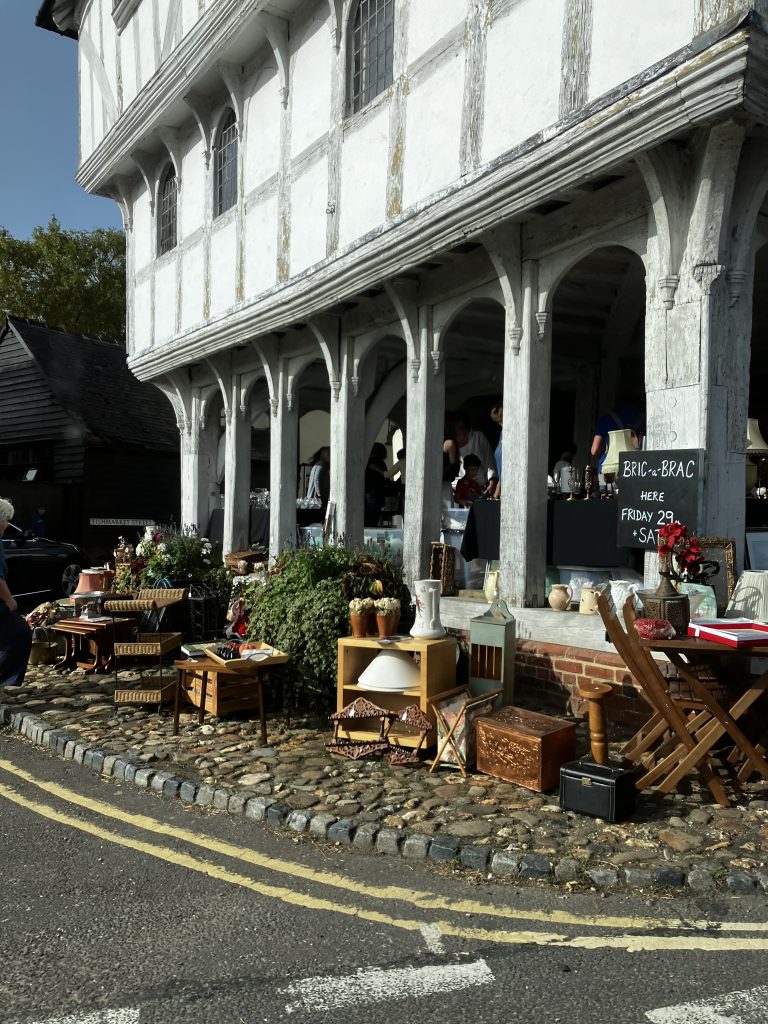
We drove through the pretty little village of Thaxted on our way to see Audley End. Here are some snaps from the car:
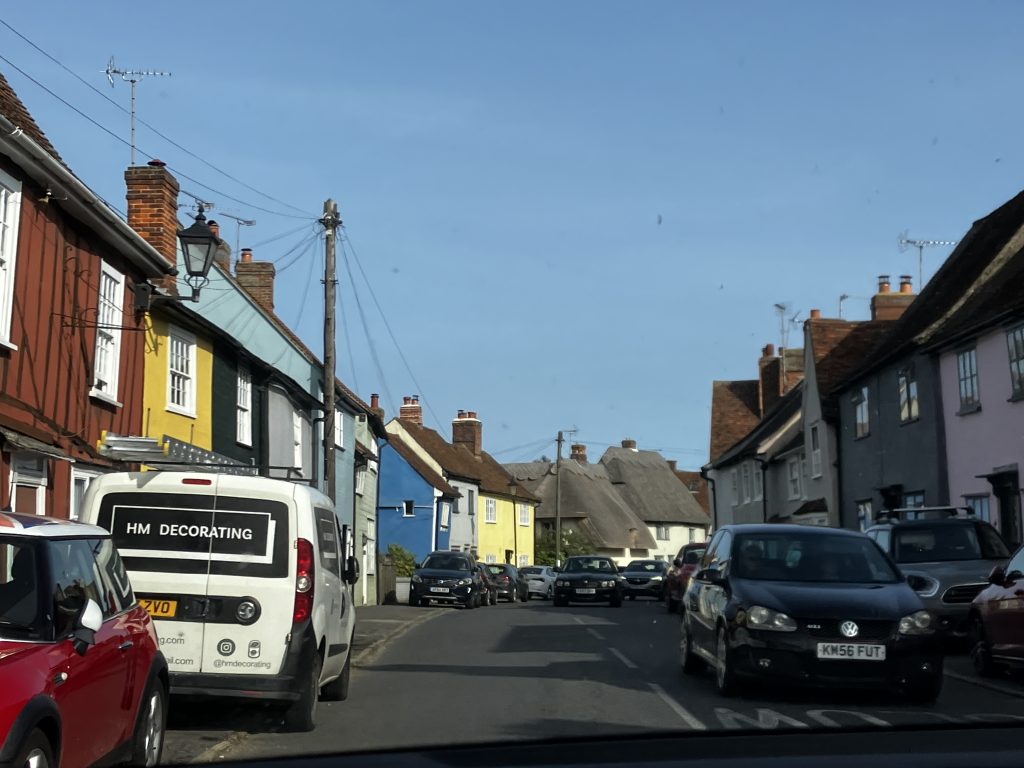
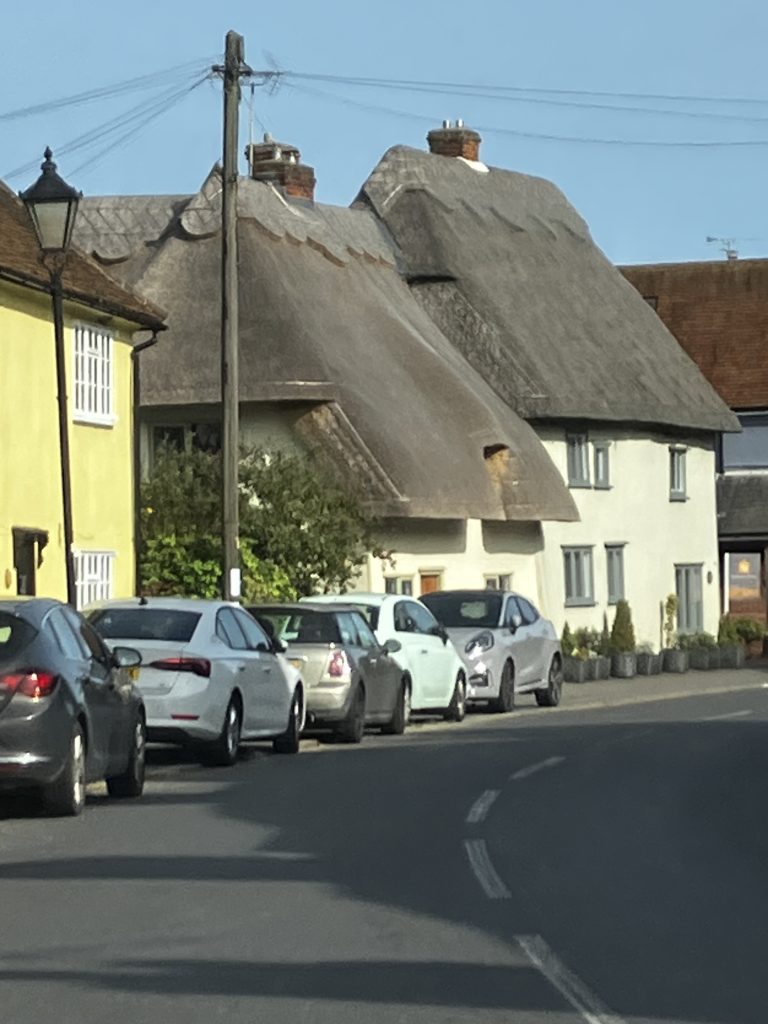
Look at the THATCH!
I remember Ben saying, “Once, you lived in a thatched house if you were poor. Now, you live in one if you’re rich.”
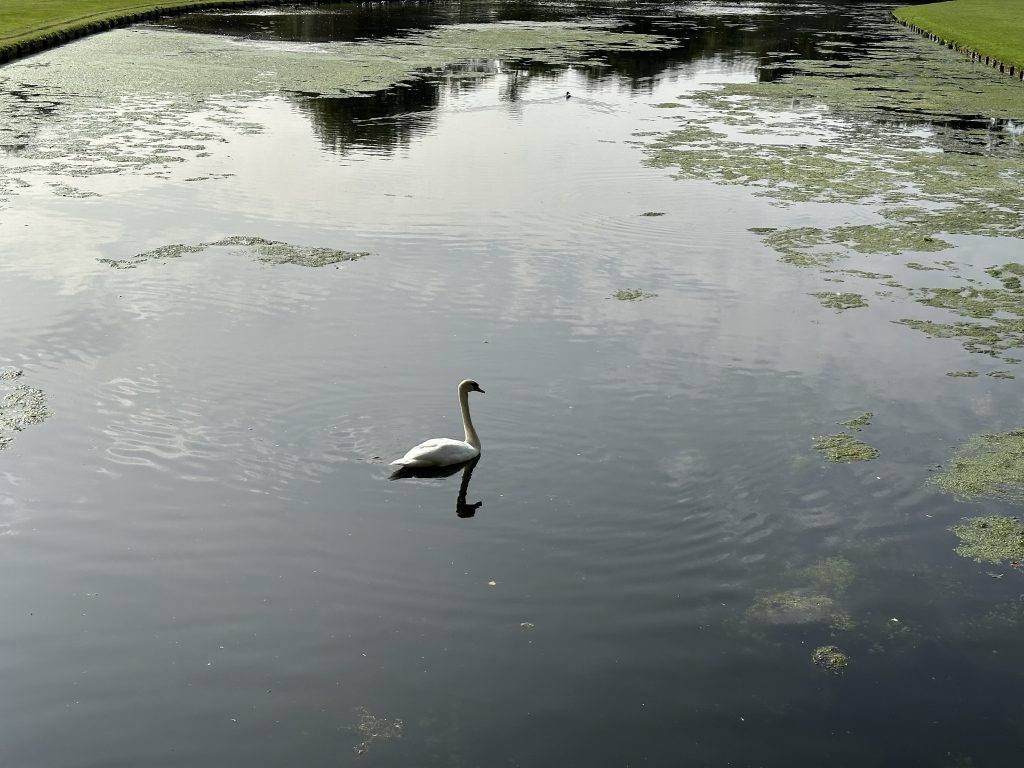
We were on our way to the prettily- named town of Saffron Walden, where the grand house of Audley End is located. Scott took this photo of one of the Audley End swans.
We knew that the house was going to be large as we drove around the perimeter of the property to get to the front gate. The old brick fence that surrounds the house is HUGE.
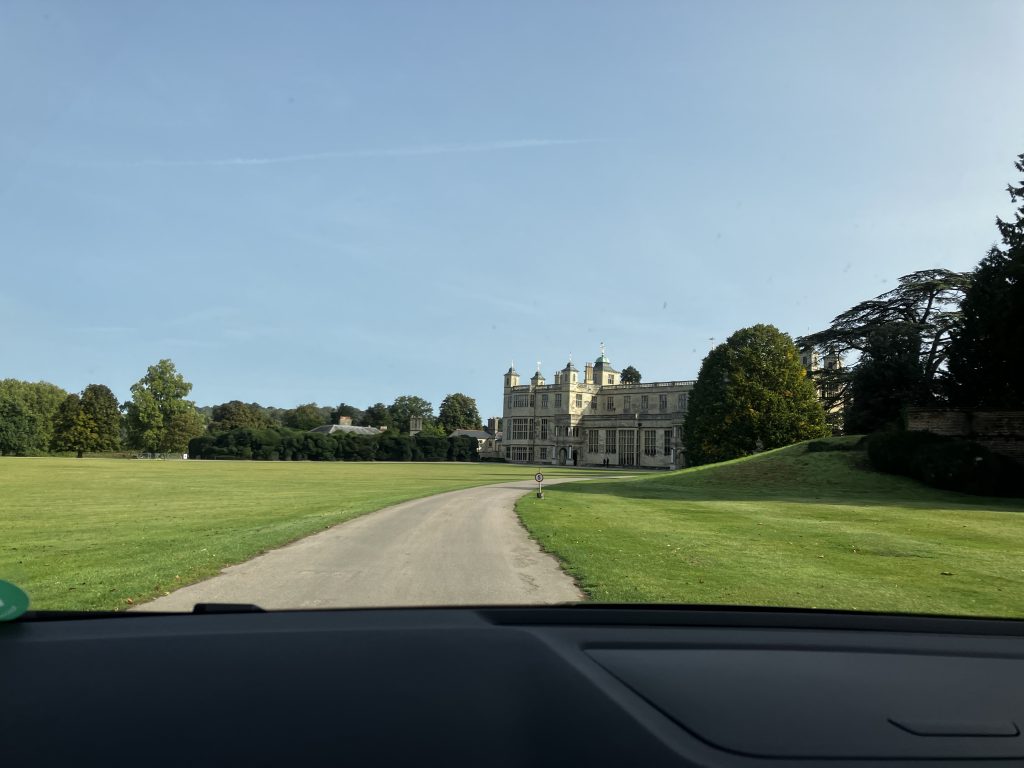
Audley End was built in 1605, on the site where a 12th century abbey used to be.
The first lord of the place was Lord Chancellor to Henry VIII, and he was content to live in the old abbey buildings. However, a couple of generations later, the lord of the manor had more grandiose ideas.
The current house that we see today is only a third the size of the original. This guy built a MASSIVE house. It was so large that when the king, James I, came to stay, he knew something was up.
“This house is too grand for a king, but not grand enough for my lord Treasurer,” the king said, and promptly threw him in the Tower.
He had to pay a fine of £30,000 to get out. This, of course, would be worth millions today.

No, we’re not laughing at his misfortune.
But really, what a doofus. His family never recovered financially.
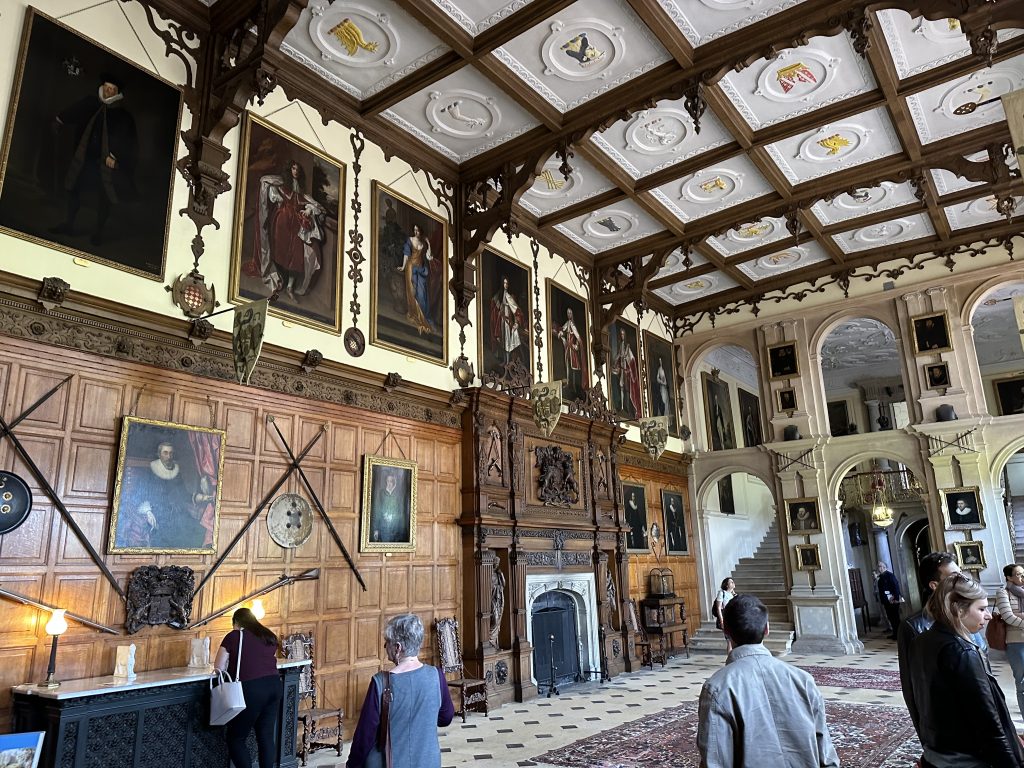
(Picture taken by Scott.)
I stayed down in the Great Hall for quite a while talking with one of the guides. He gave me the information I’ve just told you and we also talked about Ireland. Turns out his name is Sean O’Sullivan, so we had a great chat.
“These old houses have so many things packed away that everyone has forgotten about,” he said. “One day, I was called over and told to open up an old book very carefully. There, written just like you or I would write our name in a book, was ‘Walter Raleigh.’ I tell you, it gave me chills to think that he had touched this very same book.”
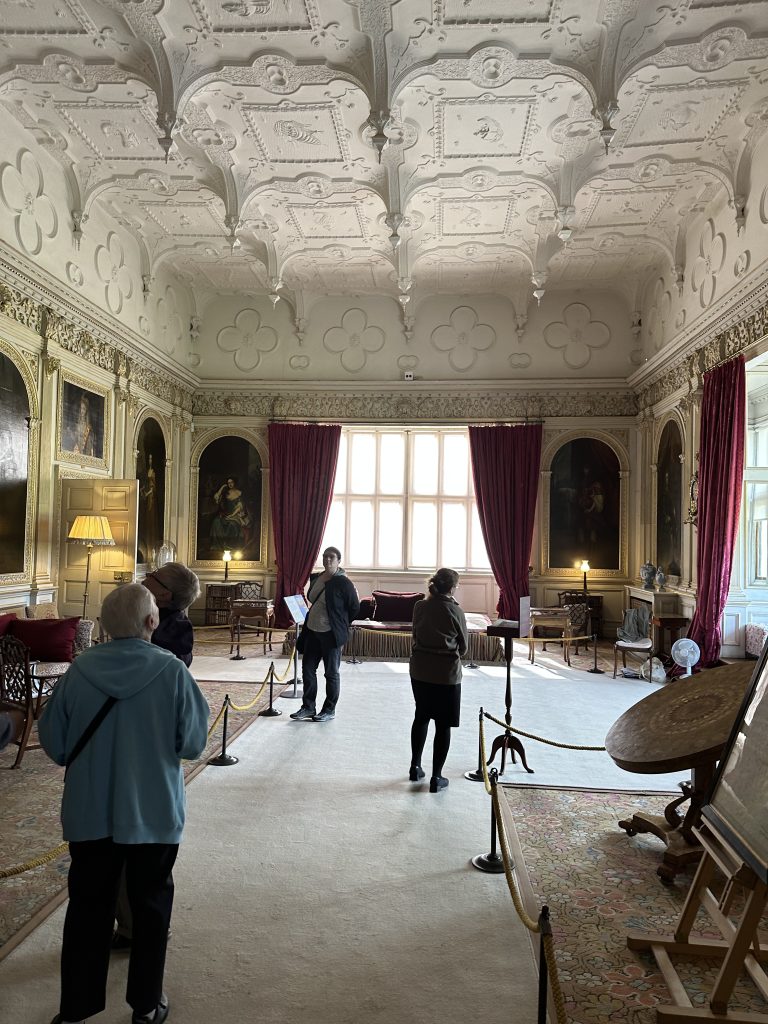
They didn’t allow photos in here, so we had to be sneaky. (This one was taken by Scott.) Look at the ceiling!
The first room up the stairs was a sitting room. The girls of the household used to practice their watercolours here, so there’s a record of how things have changed in the room over the years, from furnishings to the size of the panes of glass in the windows.
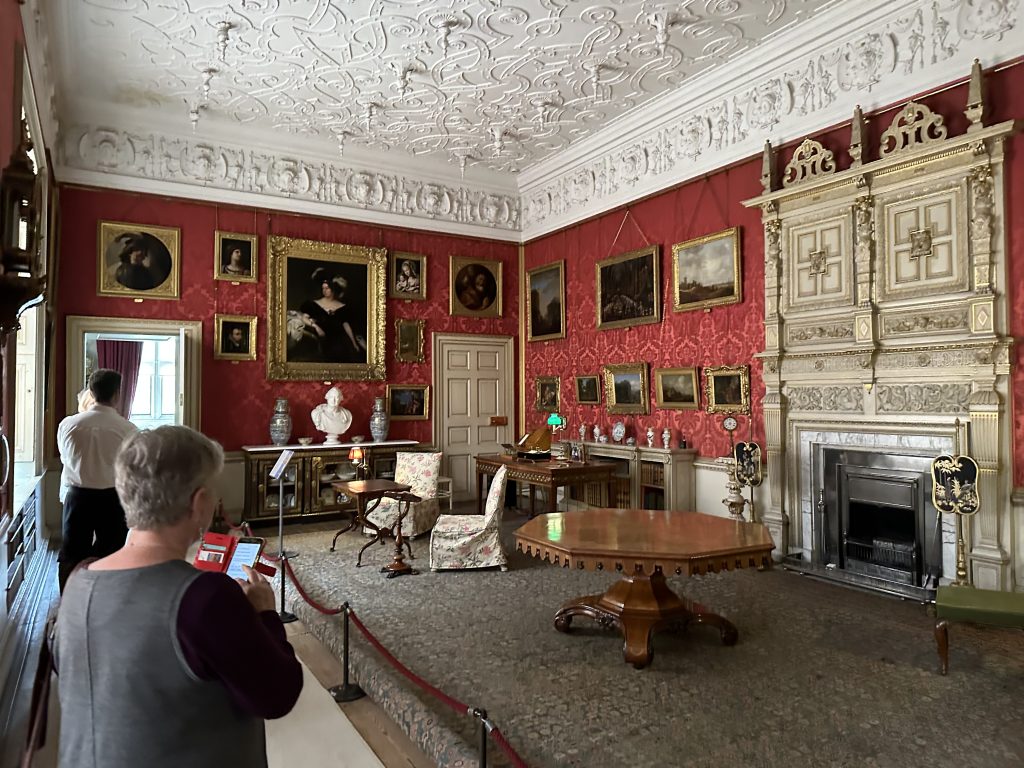
(Photo taken by Scott.) The next room was the lord’s sitting room, which has the truly idiotic features of two fake doors and one hidden one. This is in addition to the two doors that already led people from one room to the next.
Seriously? How many doors, real or otherwise, does one lord need?
It was full of paintings. The guide said that in Victorian times, some art critic came around and was convinced that every second painting was an old master. “Nowadays, “ he said, “We have a much calmer idea about who painted what.”
There was a Van Dyke self portrait in this room, which shows him pointing to a sunflower. The room guide explained that Van Dyke was Charles I’s court painter. A sunflower is a symbol of loyalty, so he was professing his loyalty to the king.
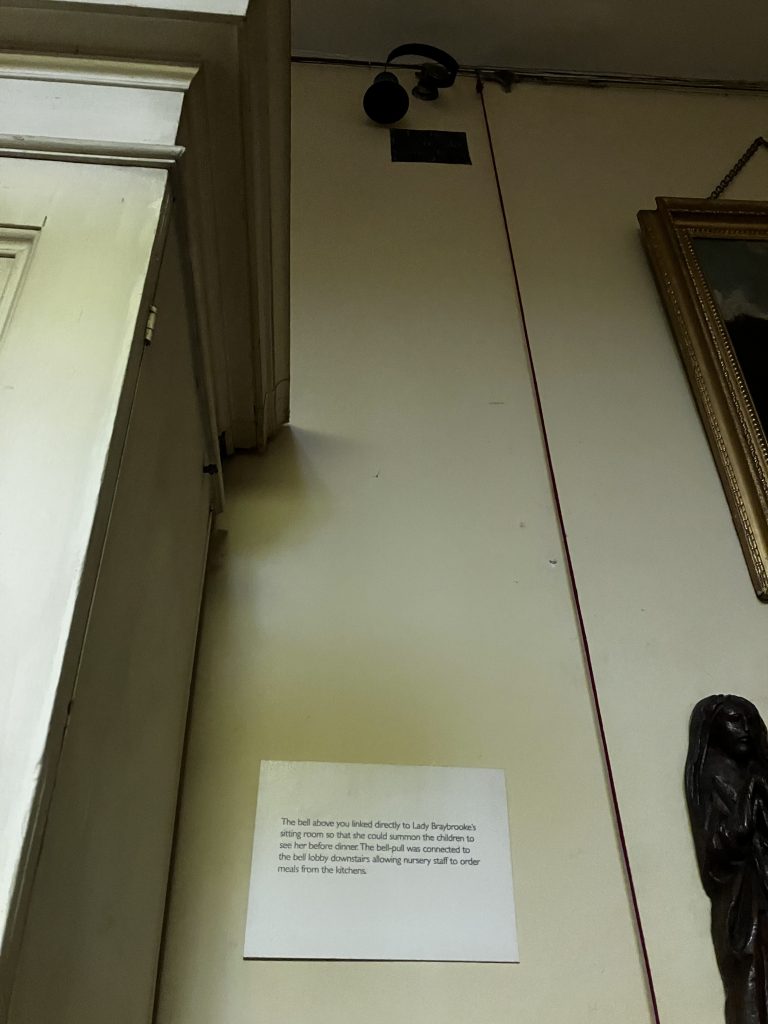
The nursery was interesting.
The first indication we had that we were getting near was this bell high up on the wall.
The mother of the children, in Victorian times there were 8 of them, would ring the bell from her sitting room when she was ready to see the children before dinner. Their governess would have to make them presentable and deliver them to see their parents for a little while each day.
The boys were sent off to Eton when they were 11, while the girls were allowed to actually dine with their parents once they were in their late teens.
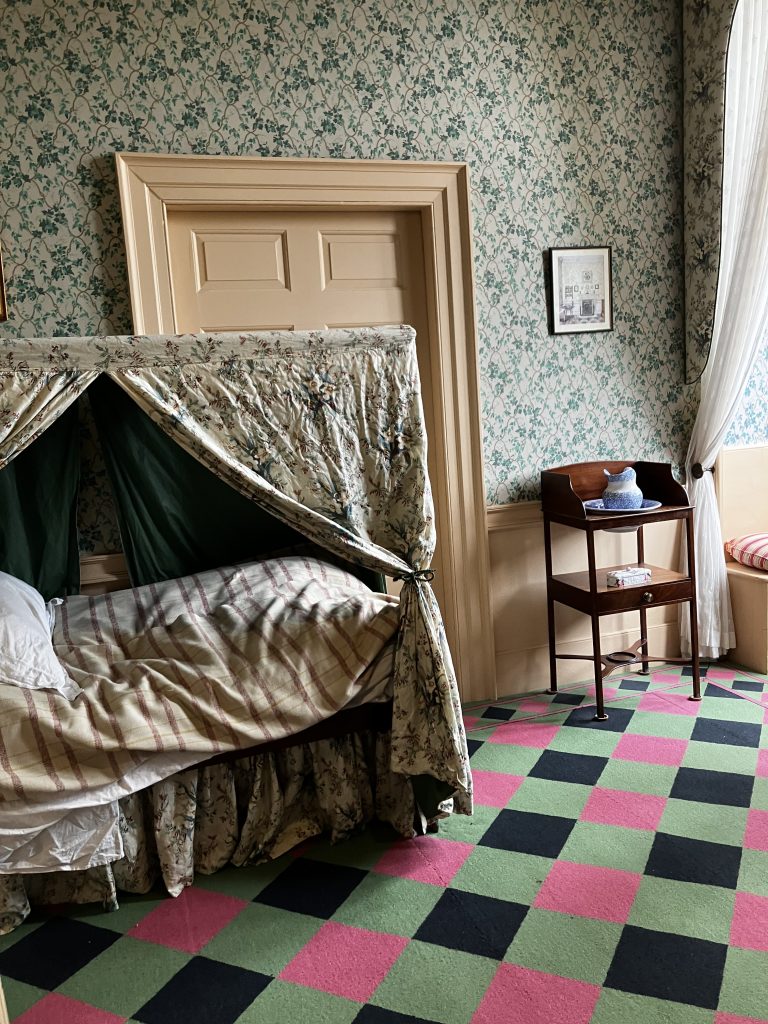
During WWII the house was used for training soldiers and the nursery wing was used for officers. When restoration work started, they found the ivy wallpaper and other colour schemes from the girls’ sketches.
Think that the carpet is hideous? Take a closer look at the drawing on the wall. It’s authentic.
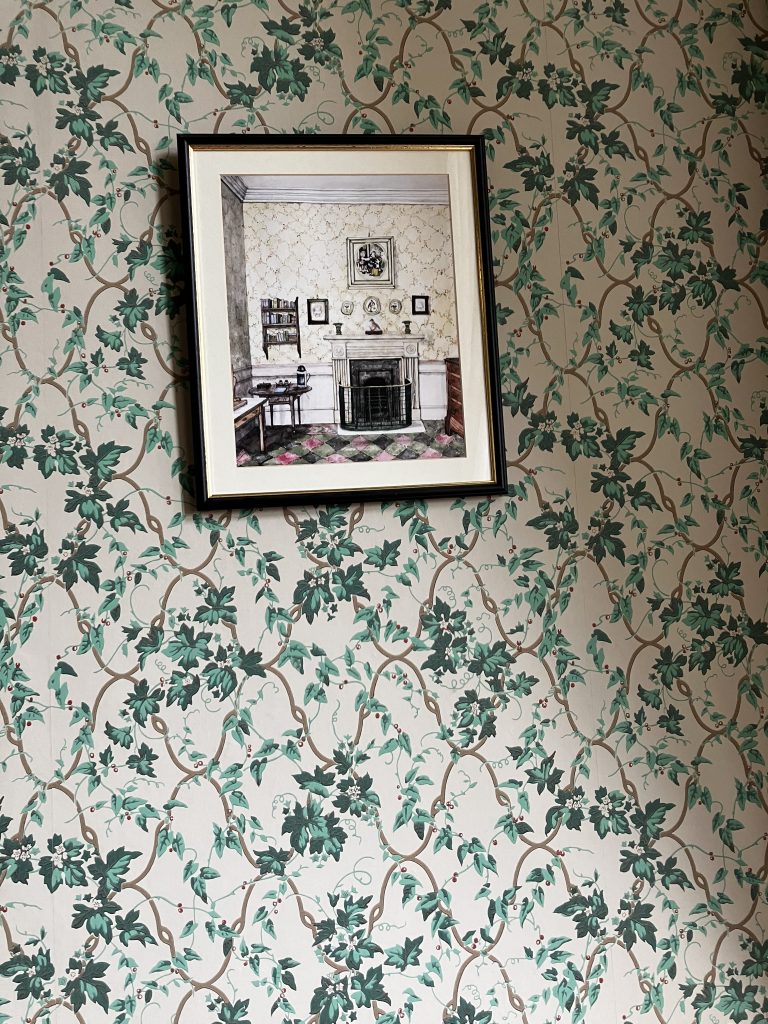
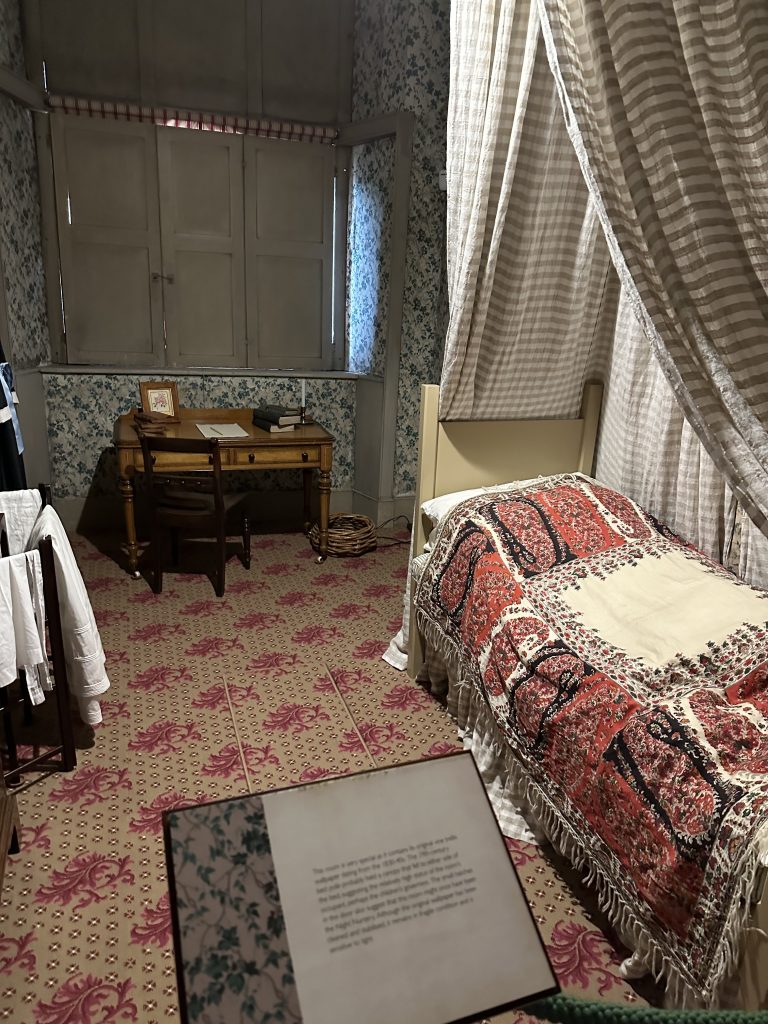
Here’s the governess’s room. It’s right in the centre of the nursery wing. There would have been no escape from the kids at any time for the poor woman.
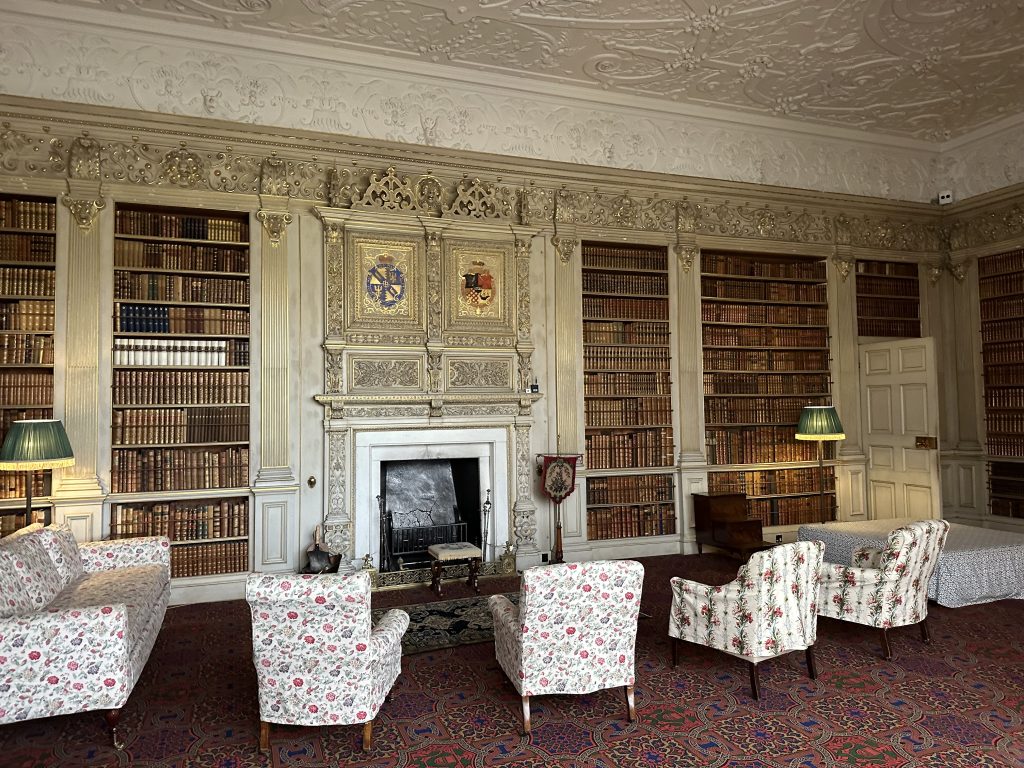
(Photo taken by Scott.) The main library was a very pleasant room, where the ladies would have come to work on their embroidery and such. It had huge windows looking out onto the gardens.
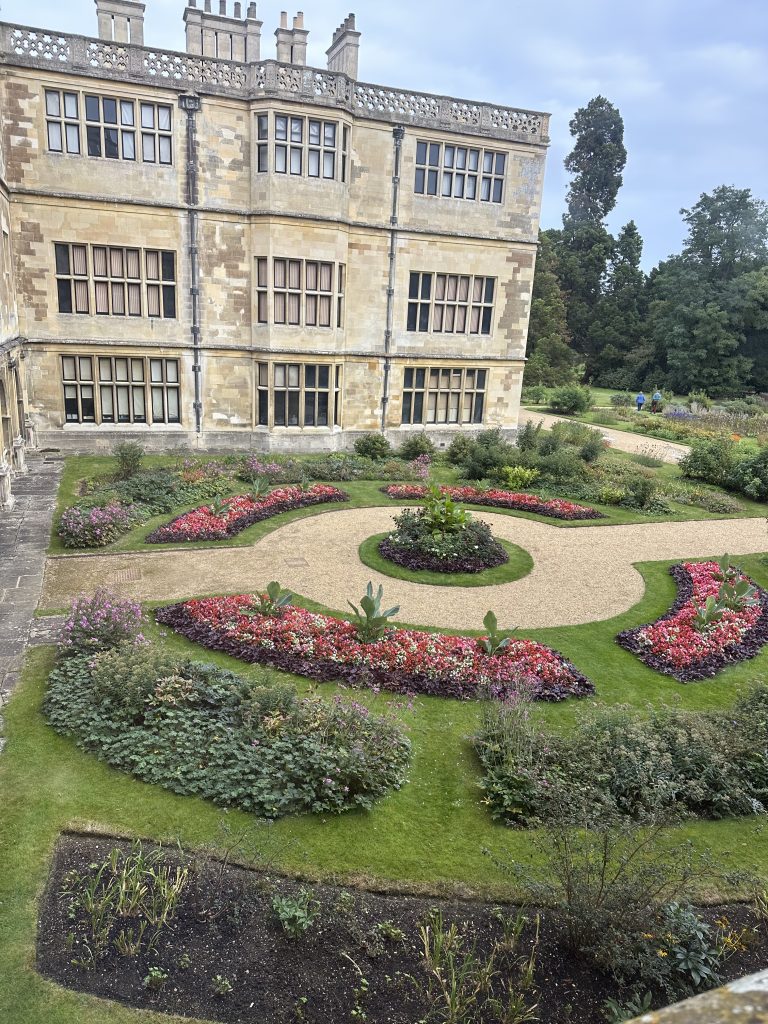
There was a formal garden around the back of the house. This was a view from one of the windows.
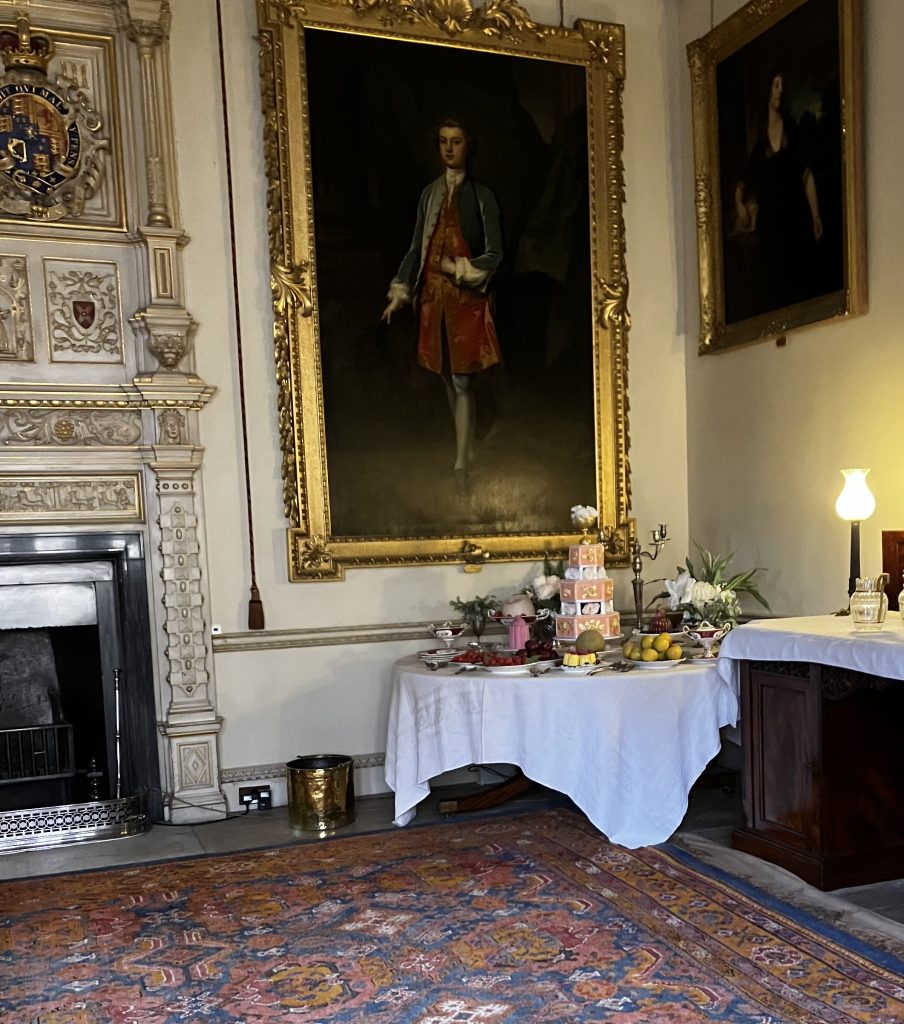
I liked this little side table in the dining room.
“I like the look of the cakes!” said a young man walking through.
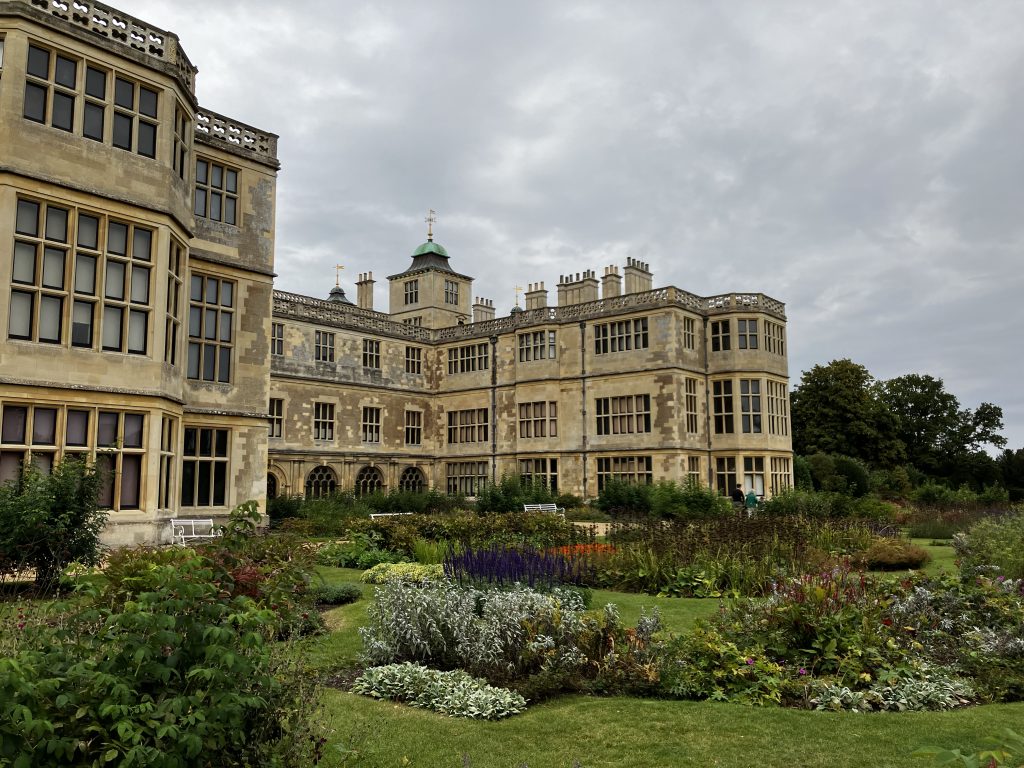
Here’s the back yard. When you think that this used to be three times bigger than it is now, the mind boggles.

Keen eyes will be able to spot an actual bumblebee.
I bought a bumblebee ornament for my Christmas tree from the gift shop here.
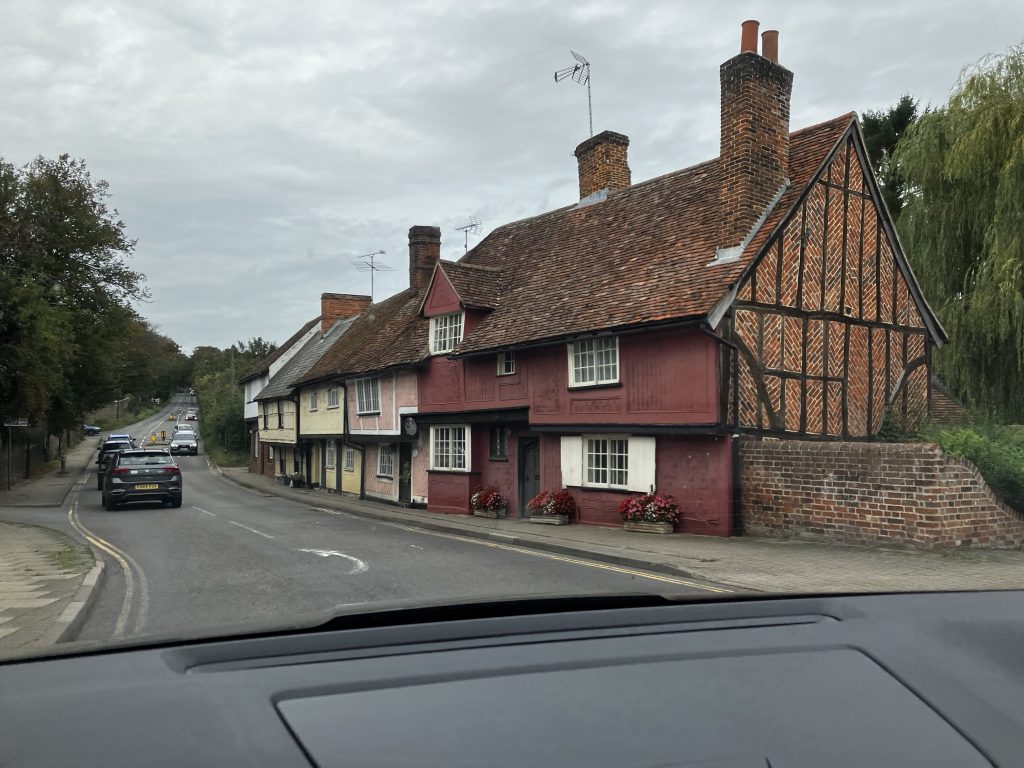
We were feeling a little bit peckish by now, so we drove into Saffron Walden to have a look around.
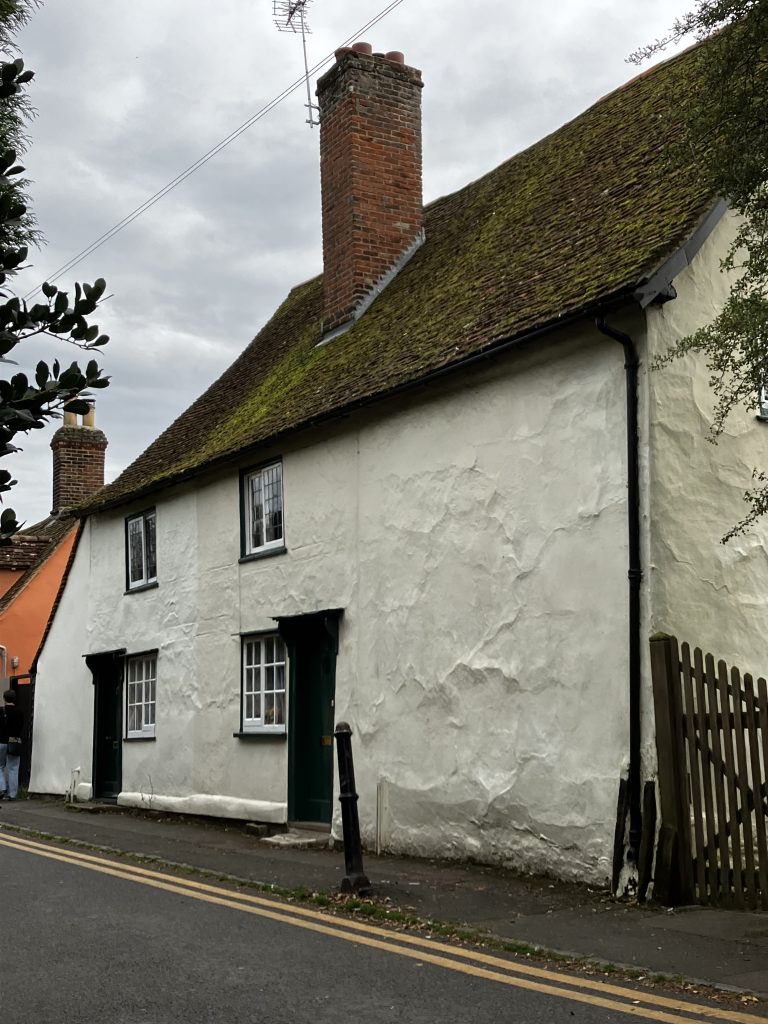
Saffron Walden used to be called Walden, but the for a long while in the Middle Ages there was a thriving saffron growing industry here.
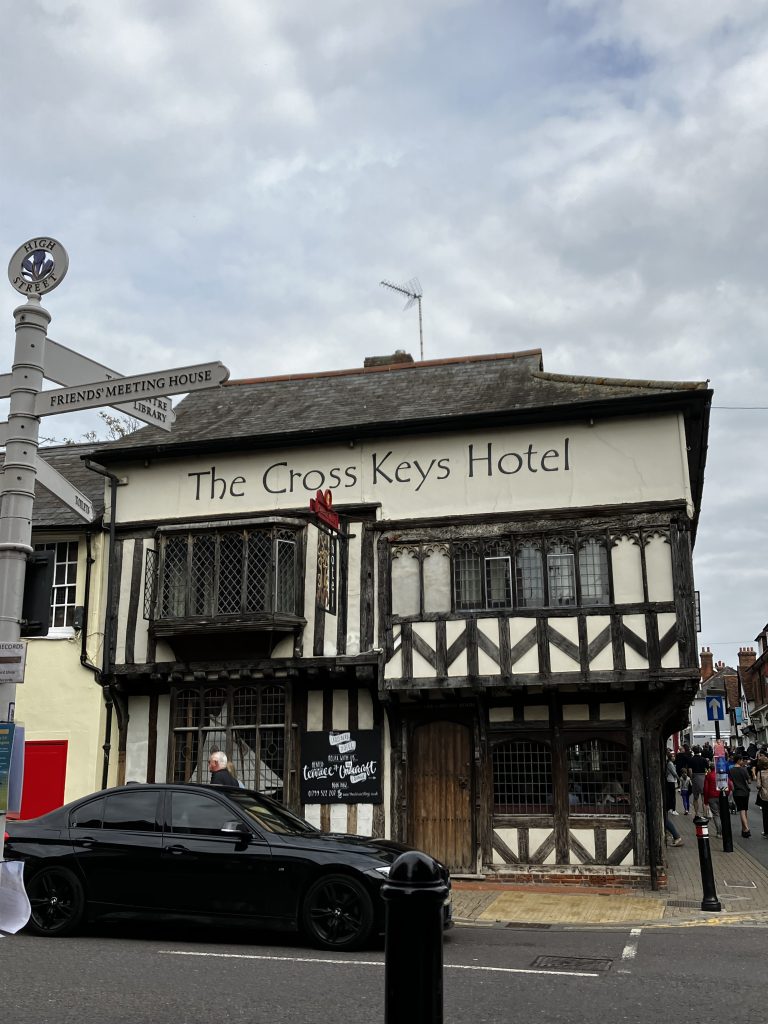
It’s a very pretty town, with many old buildings still in use today.
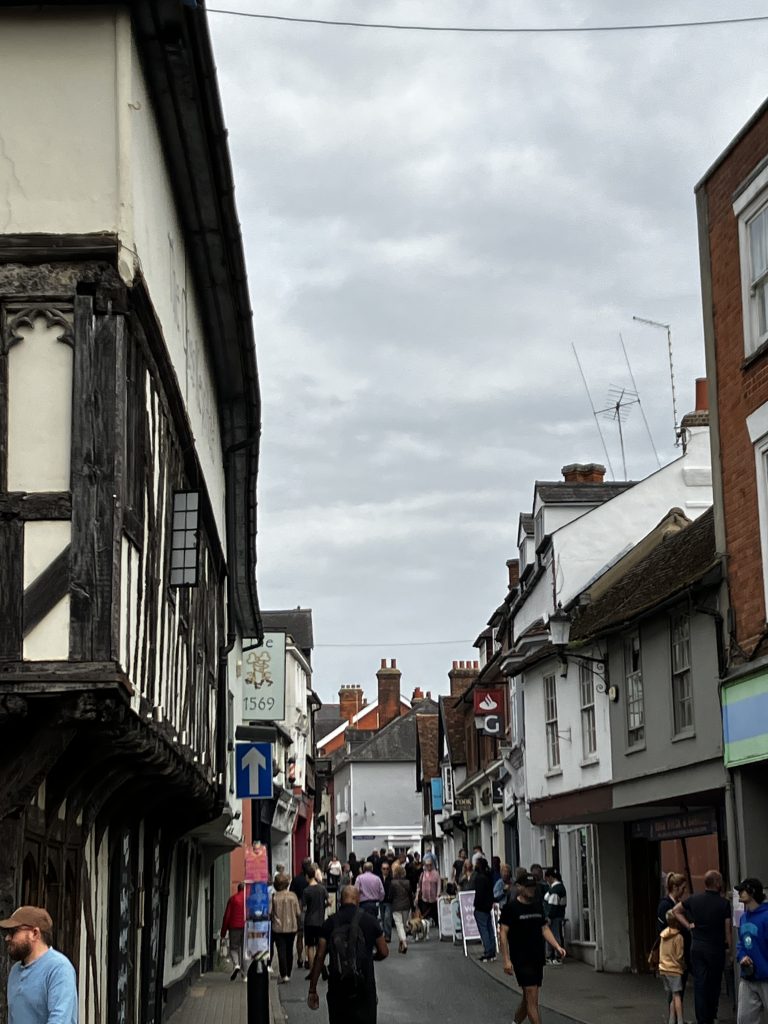
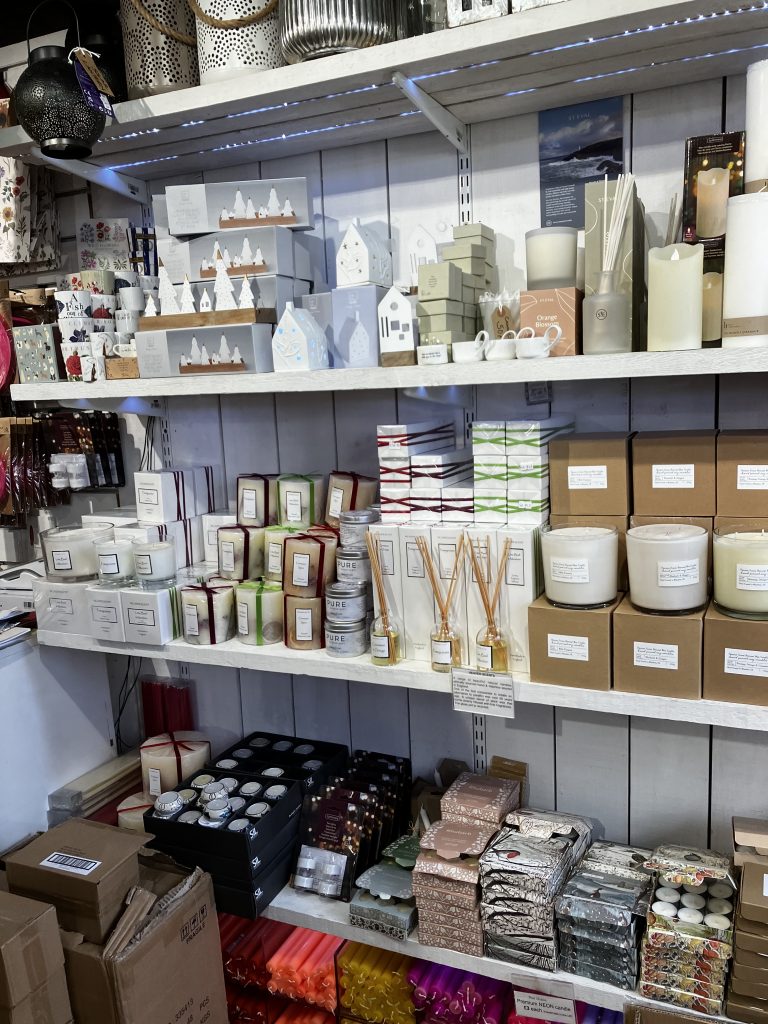
It was in this shop that I realised that my sense of smell was back.
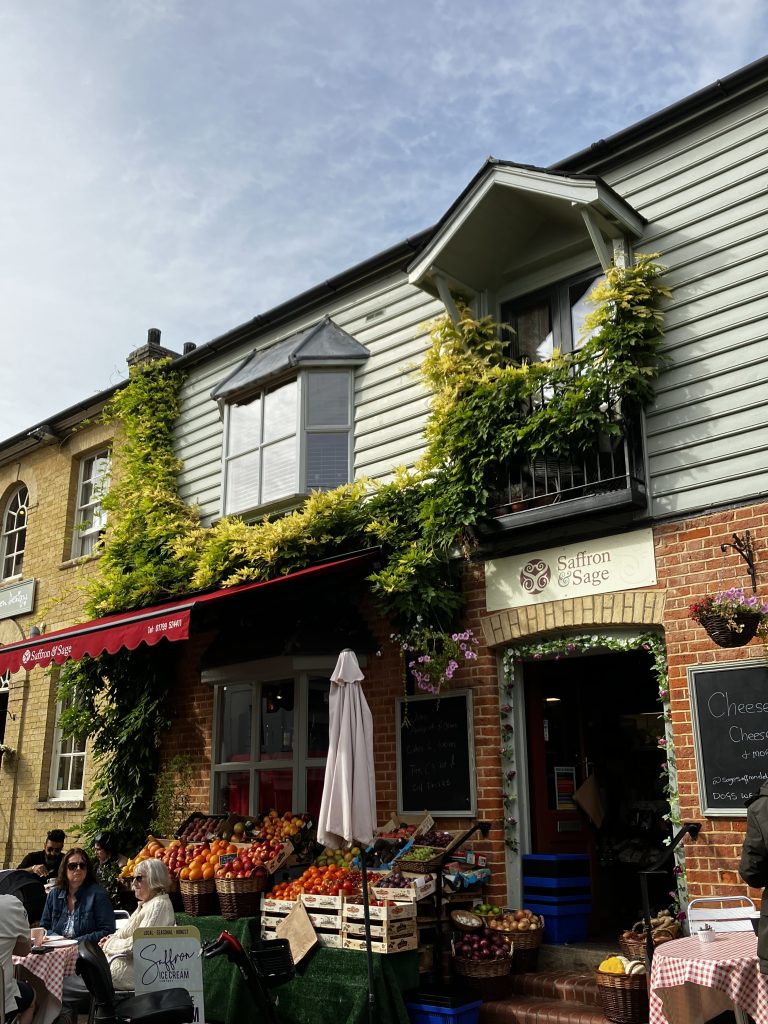
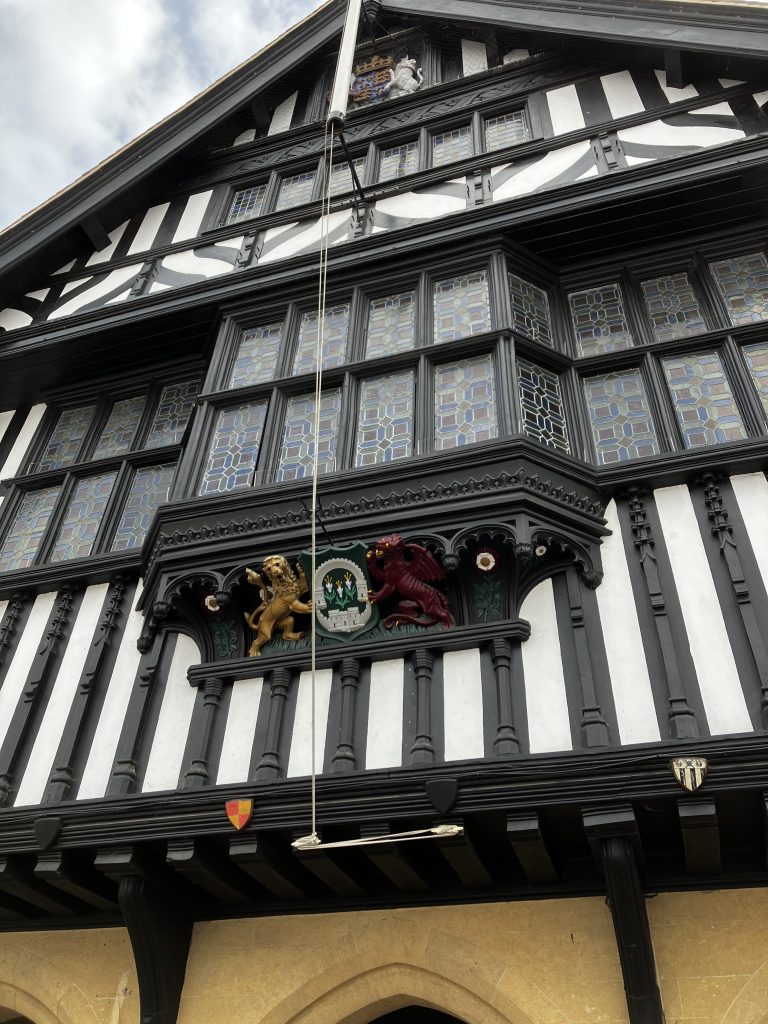
I mean seriously. Look at that.

But in some ways, time has marched on.
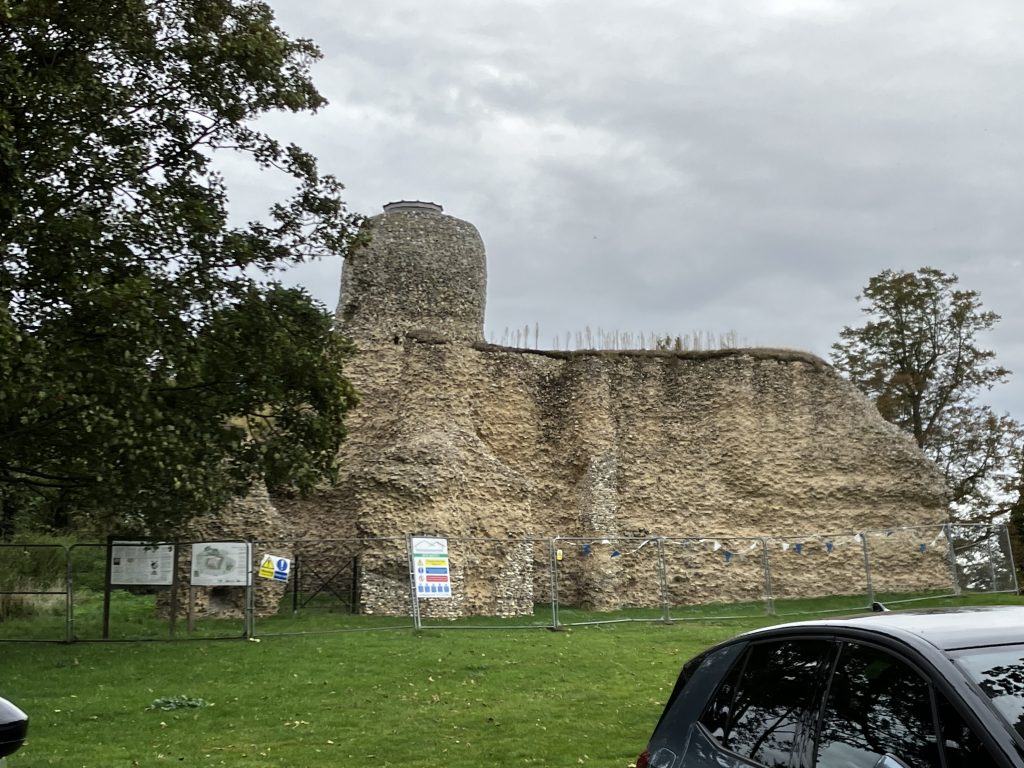
A short walk away from the centre of town is the ruins of Walden Castle. It was built in the 1100’s.
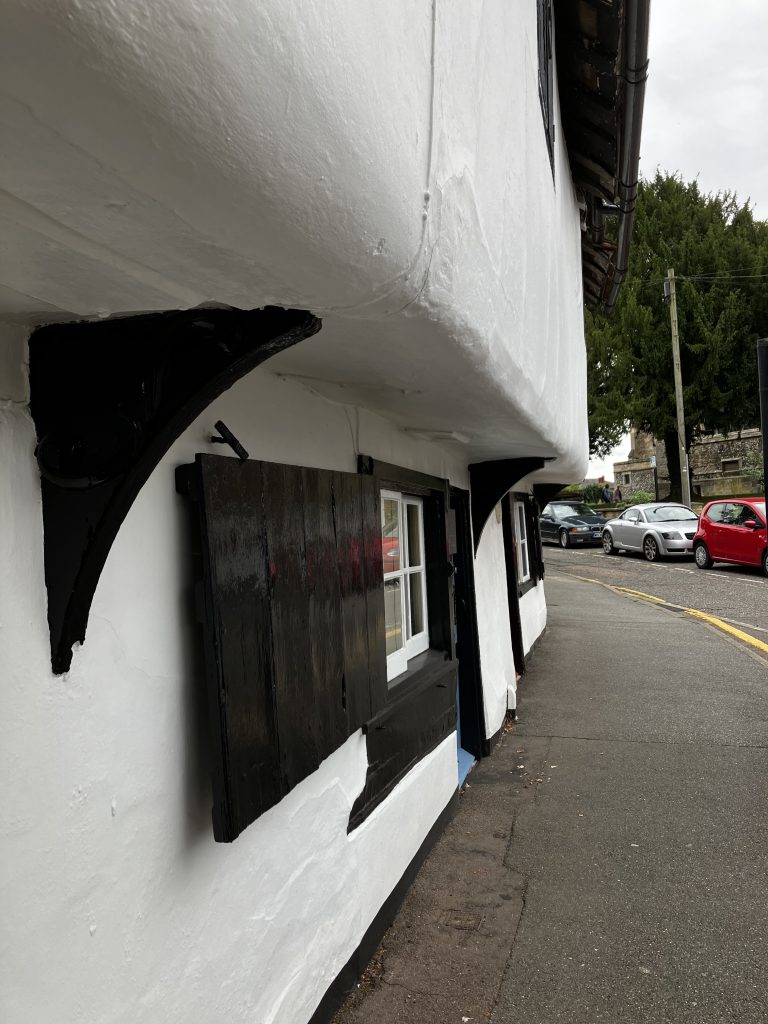
I was able to walk underneath the second story of this house without ducking my head. I’m 5’2”.
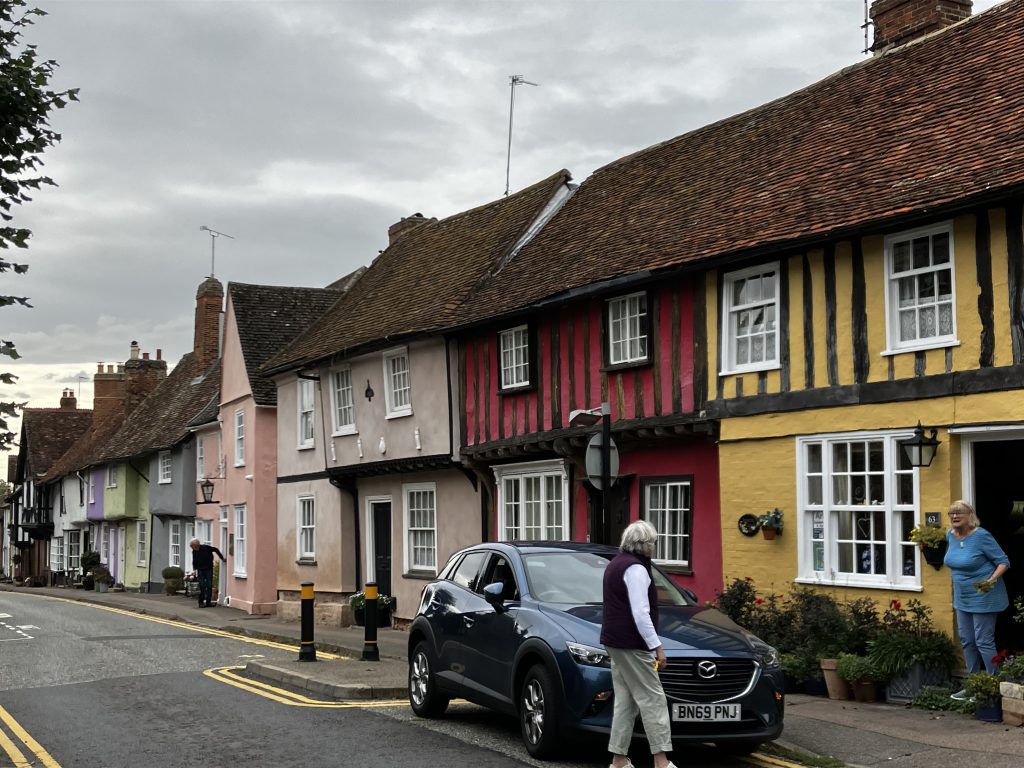
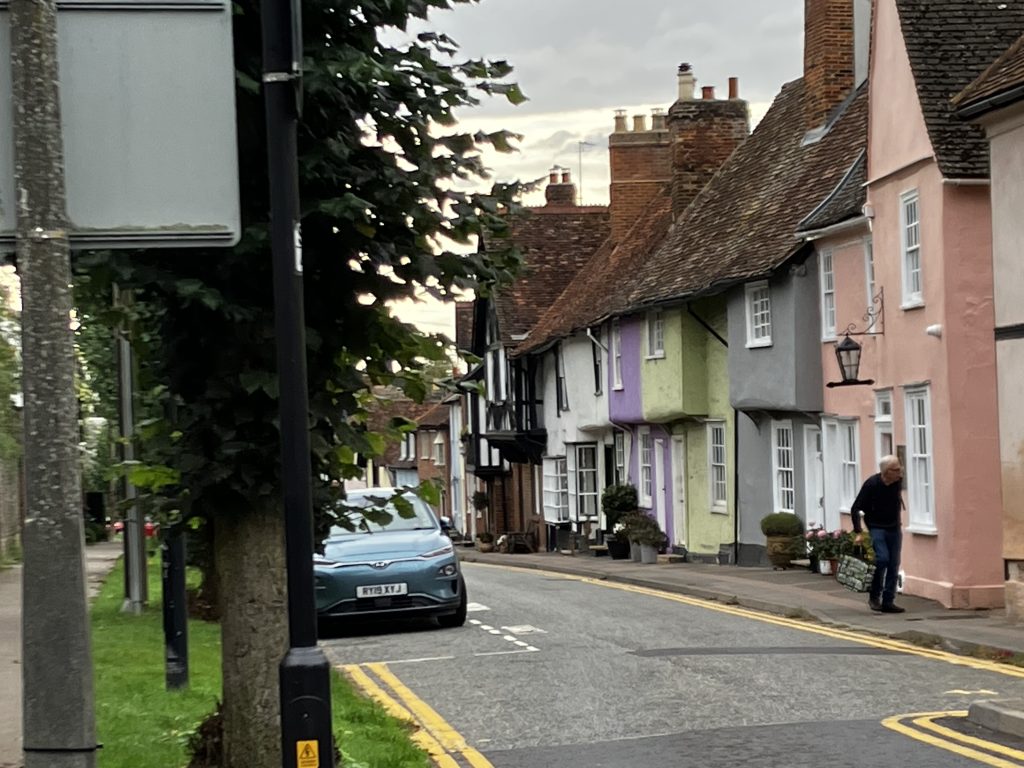
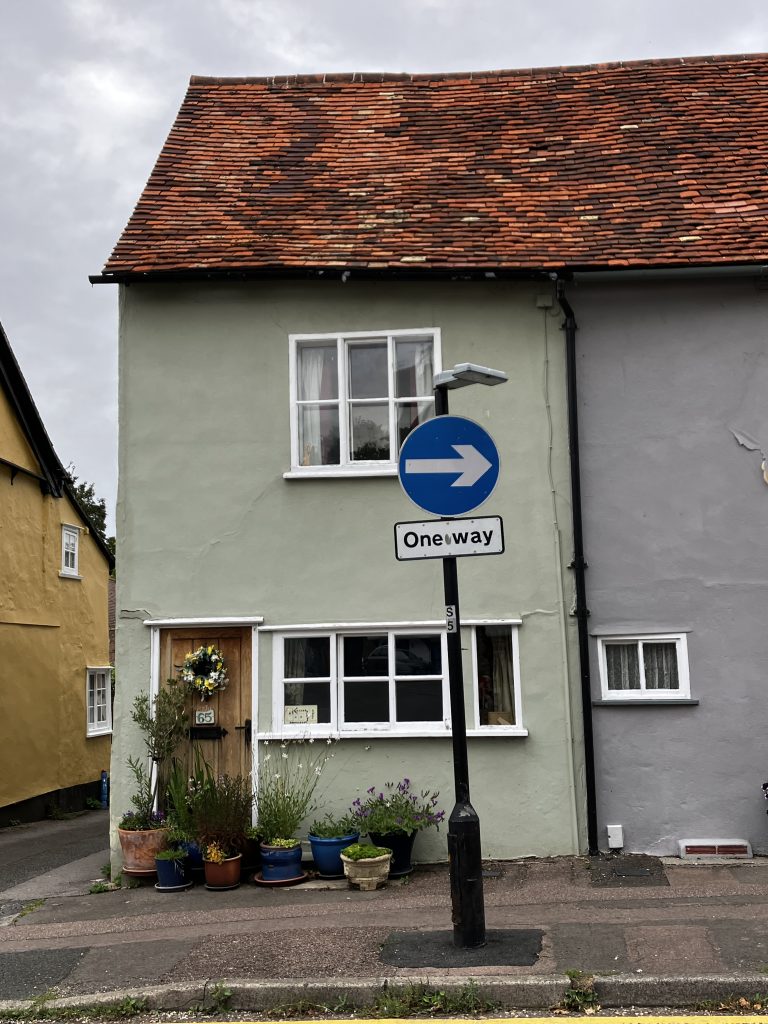
The roof. The plants…
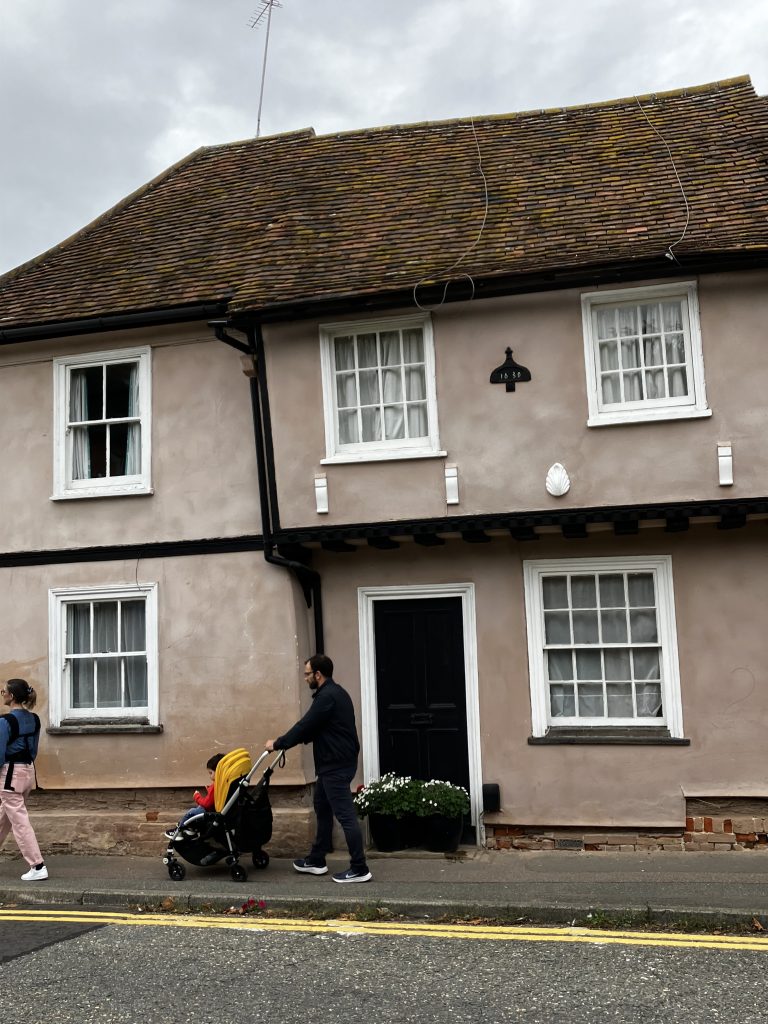
Zero in on the date above the door. Amazing.
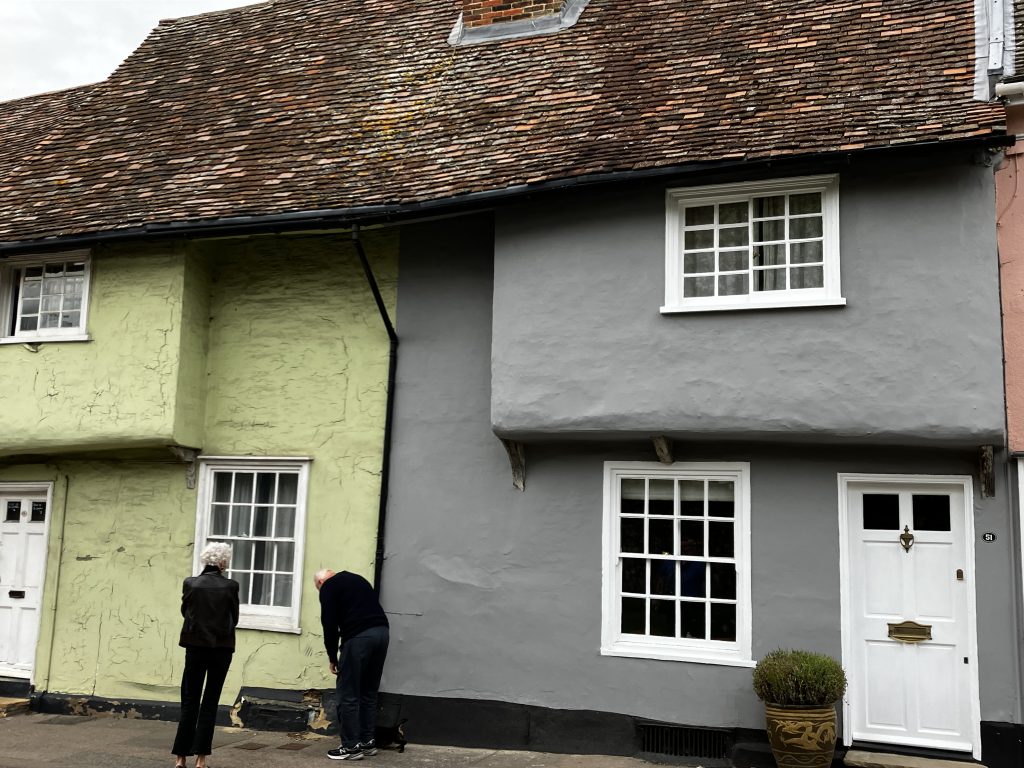
There’s a dachshund behind the man. The dog’s name is Banger.
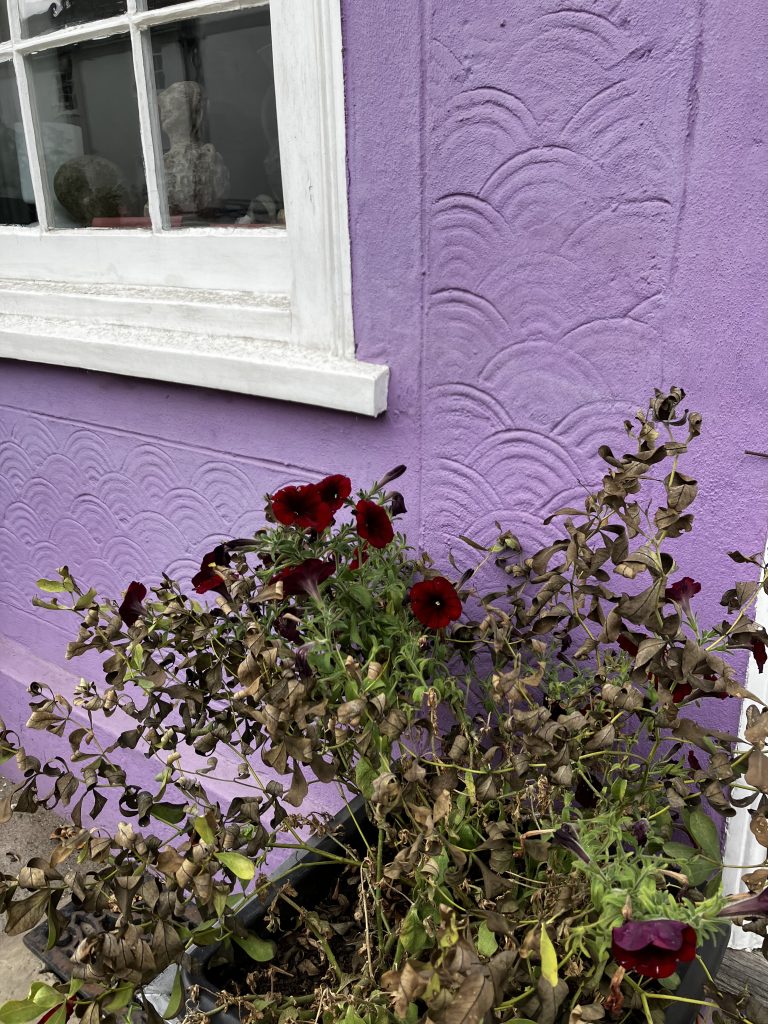
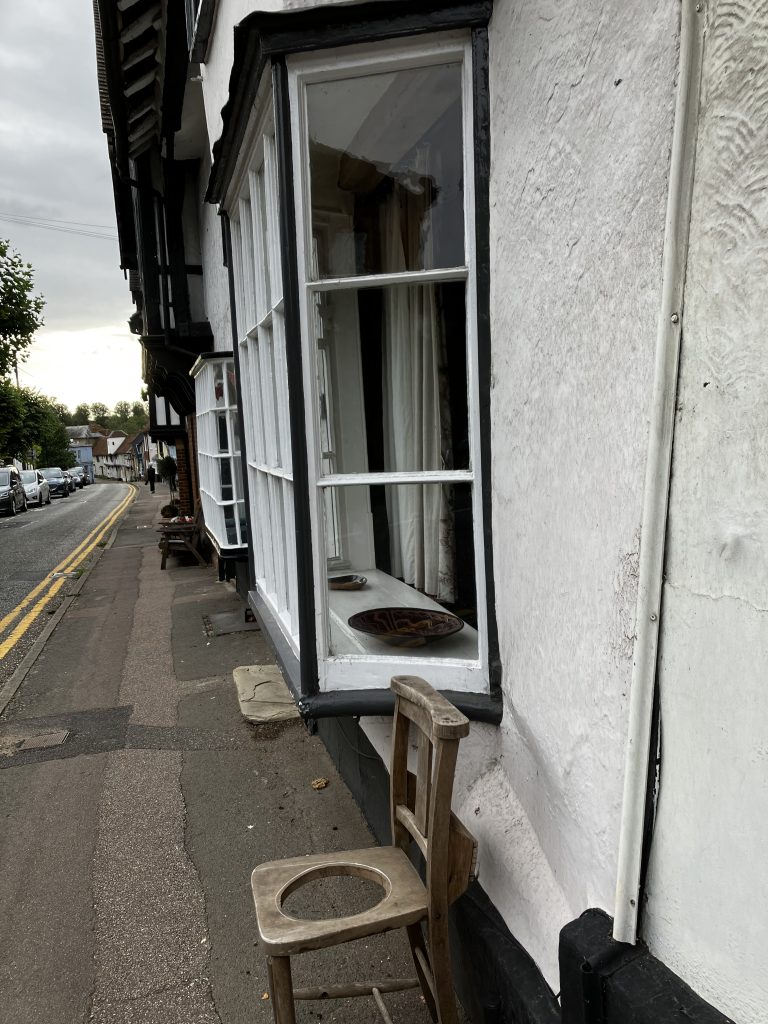
I just had to snap this picture. You can just see how this used to be a shop window, with all the wares spread out where people would walk right by.
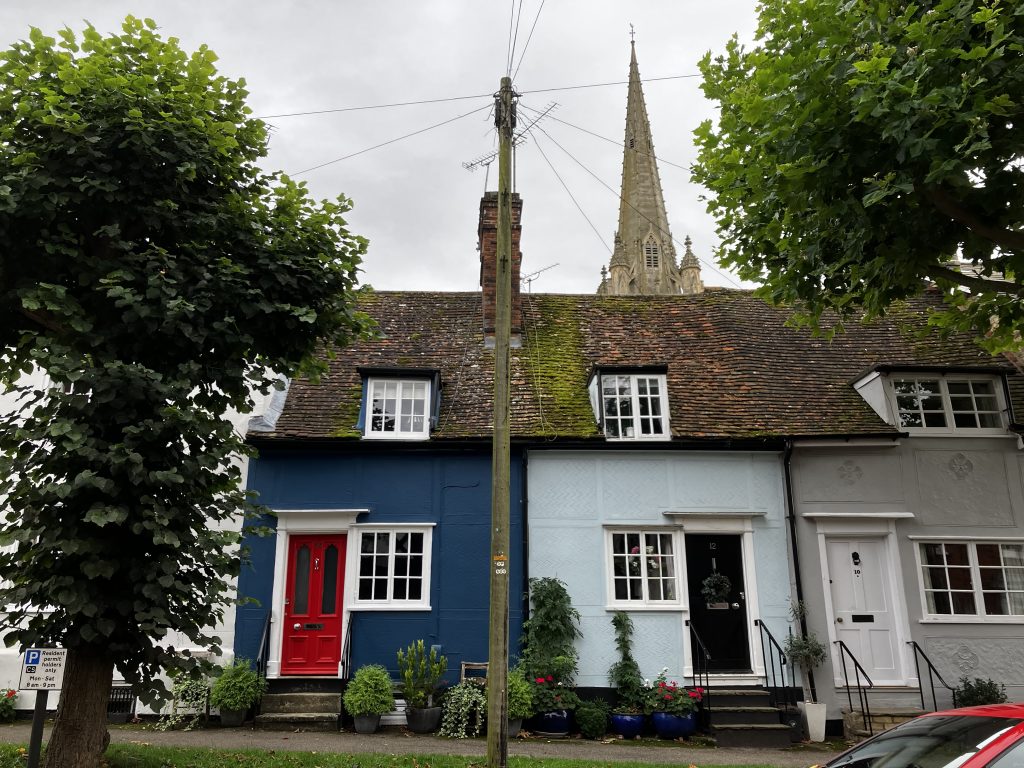
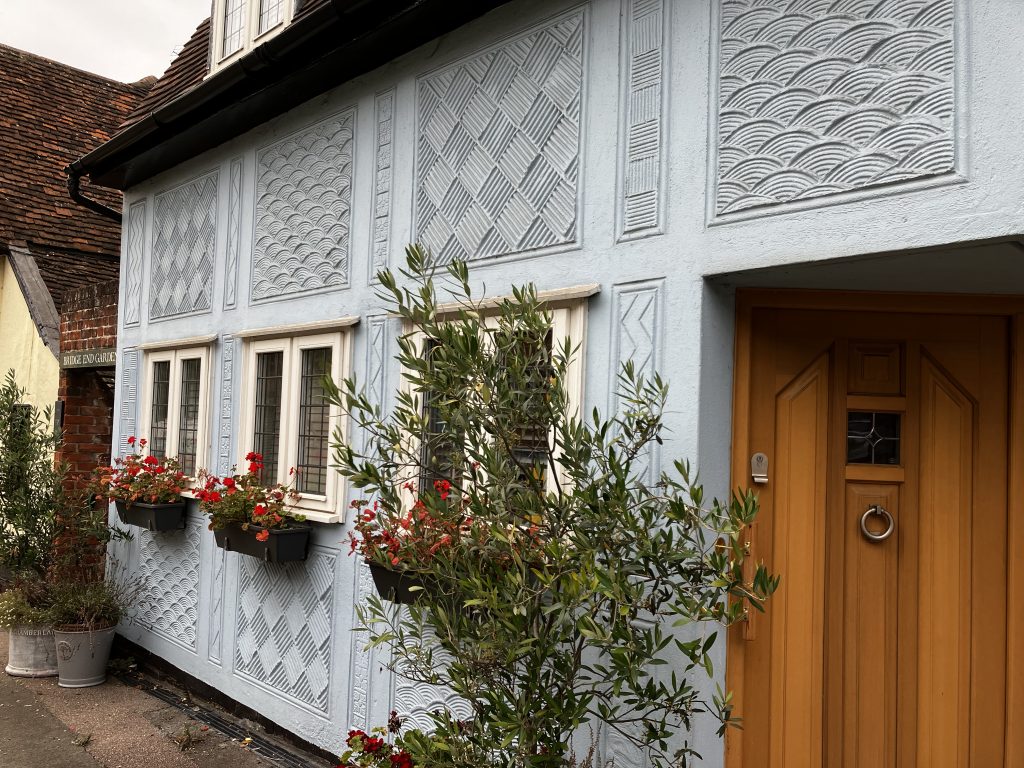
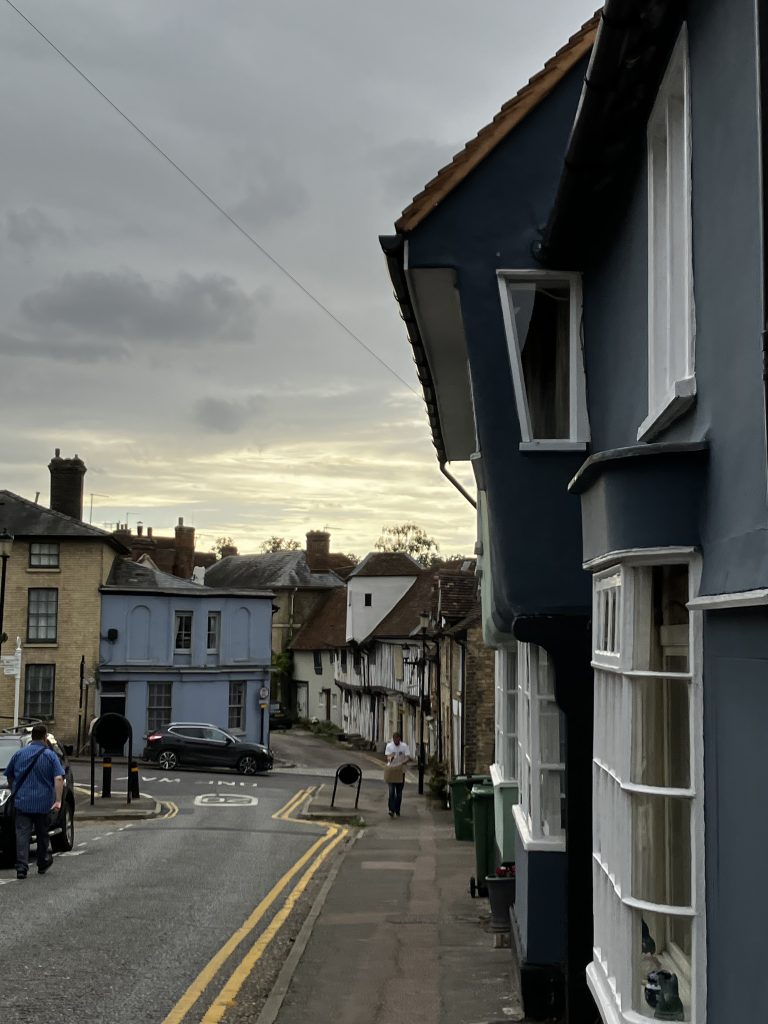
What a vista.
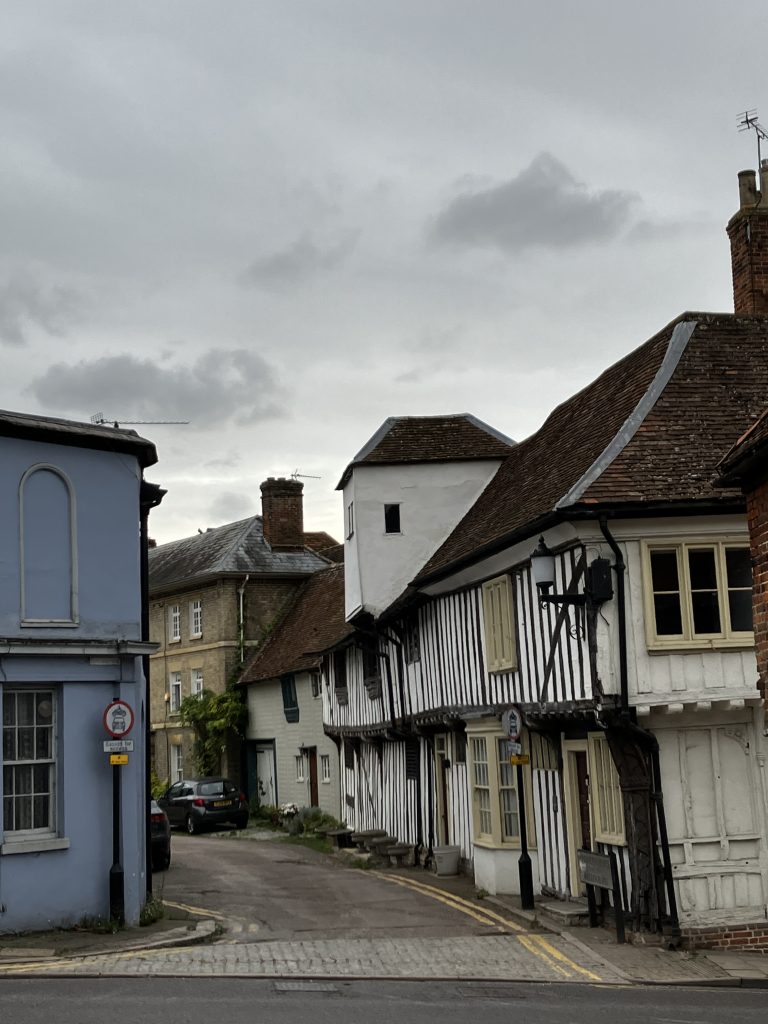
Then we went to find a church that had Lord Audley buried in it. He used to work with Thomas Cromwell during Henry VIII’s reign.
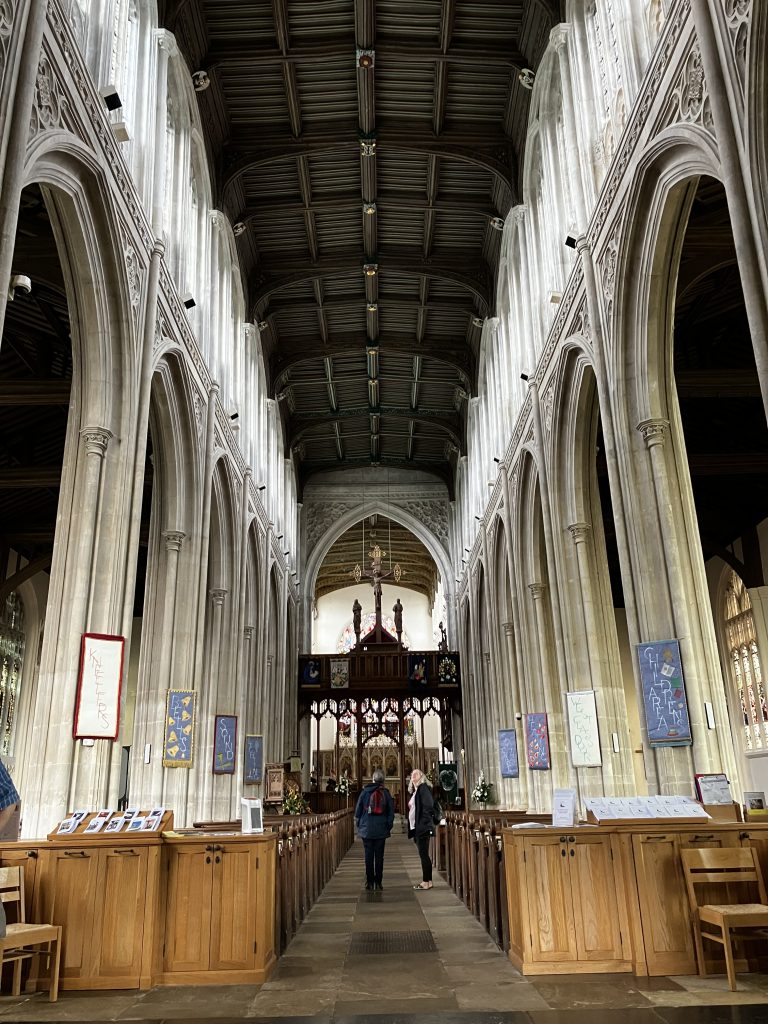
The church was impressive enough. But where was The Great Man’s tomb?
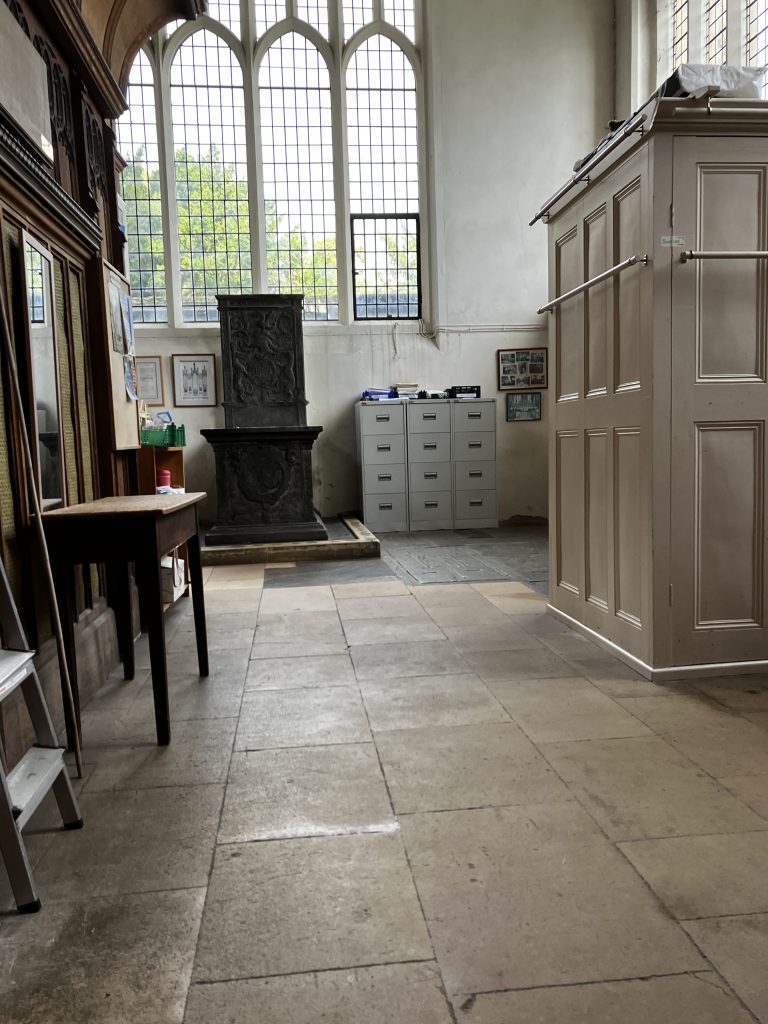
Here. In a side office where the church files and day to day operations are carried out. How the mighty have fallen, We had to look past a curtain and push it aside to get to him.
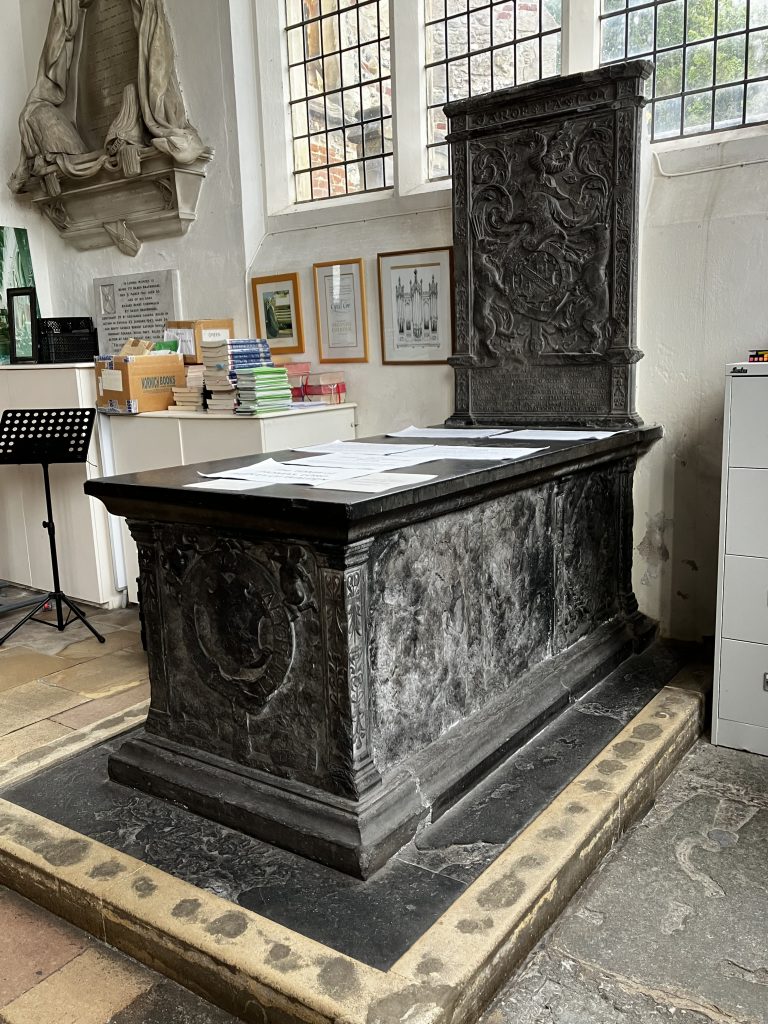
He was actually a huge deal in his day.
Thomas Audley was appointed Speaker in the House of Commons in 1529 expressly to preside over the Reformation Parliament that authorised the break with Rome. He worked with Thomas Cromwell to take control of the king’s legal and parliamentary affairs.
The Reformation Parliament was summoned by Henry VIll in 1529 to settle his ‘Great Matter’, his divorce from Catherine of Aragon. Henry’s case was championed in the Commons by the Speaker, Thomas Audley.
Lord Chancellor Audley passed judgement on Sir Thomas More and John Fisher for their refusal to swear an oath recognising the king’s marriage to Anne Boleyn.
This made me cross. I love the play/movie ‘A Man For All Seasons’ about Thomas More. Audley is an arse.
At the time of Anne Boleyn’s arrest he was known as ‘Cromwell’s creature’ but when the King became unsettled by Cromwell’s ruthlessness, pursuit of reform and the unsatisfactory marriage to Anne of Cleves, trust between Cromwell and Audley broke down.
In 1540 Audley announced Cromwell’s arrest to the House of Lords and after his execution, his judicial responsibilities were given to Audley.
Lord Audley and Henry VIl’s queens:
Lord Chancellor, Thomas Audley sanctioned the King’s divorce from Catherine of Aragon.
He investigated Anne Boleyn’s alleged crimes and accompanied her to the Tower of London in 1536 prior to her trial and execution.
He was instrumental in obtaining the annulment of Henry’s marriage to Anne of Cleves in 1540 and presided over the trial of Catherine Howard in 1541.
So, basically he enabled Henry VIII in all the dodgy shenanigans that he got up to. How funny that he’s now shoved aside in a local parish office.
I bet he’d be furious!
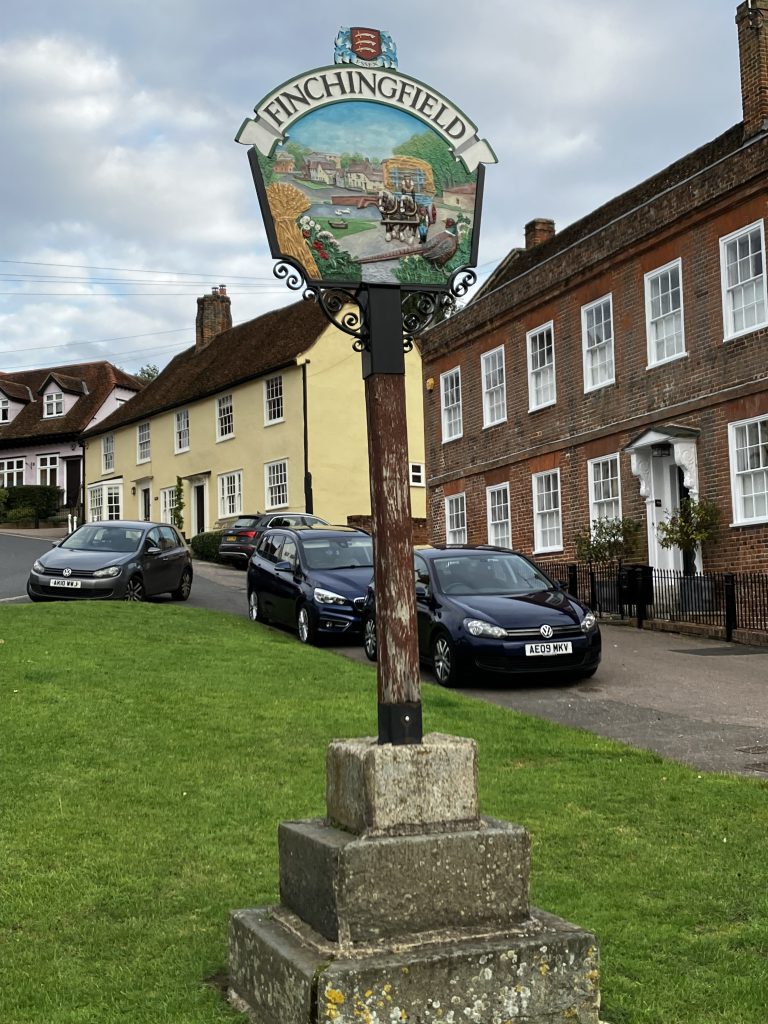
As if all this prettiness wasn’t enough, we stopped in the chocolate-box town of Finchingfield on the way home.
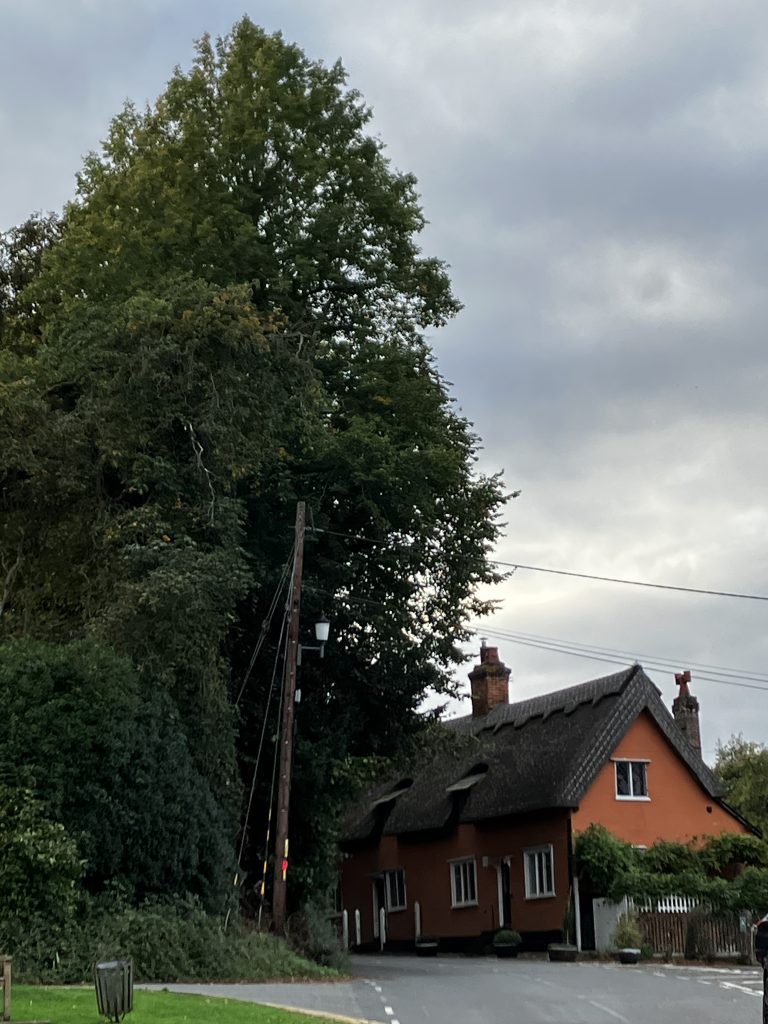
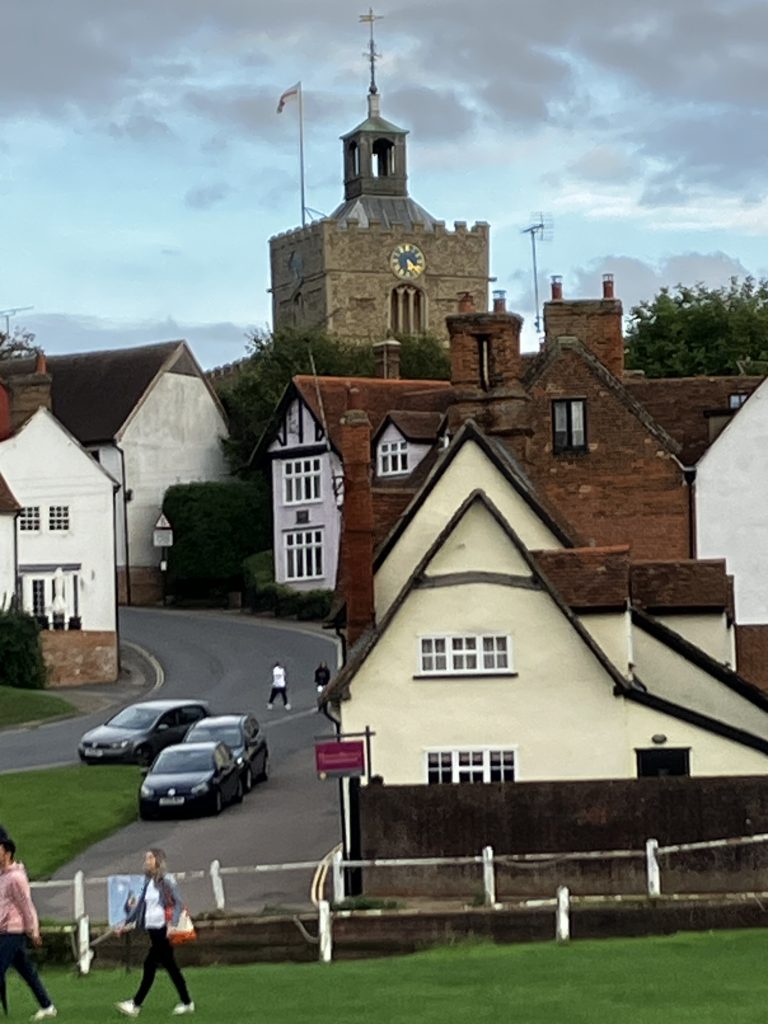
All we had to do was walk around the town square…
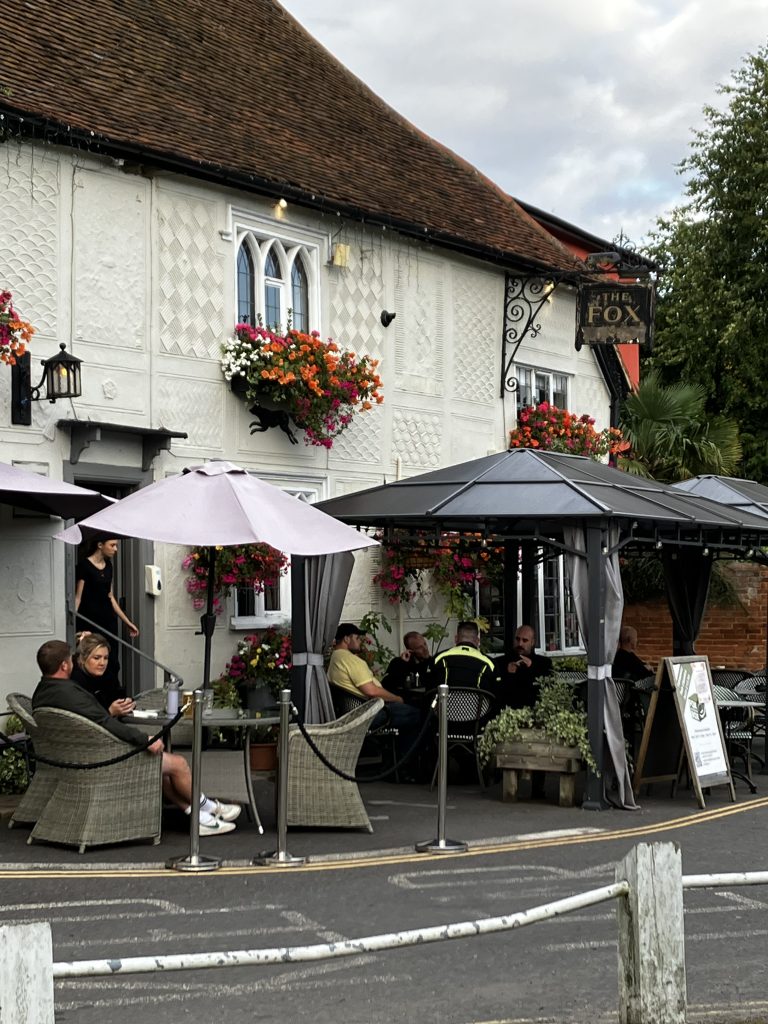

The town windmill.
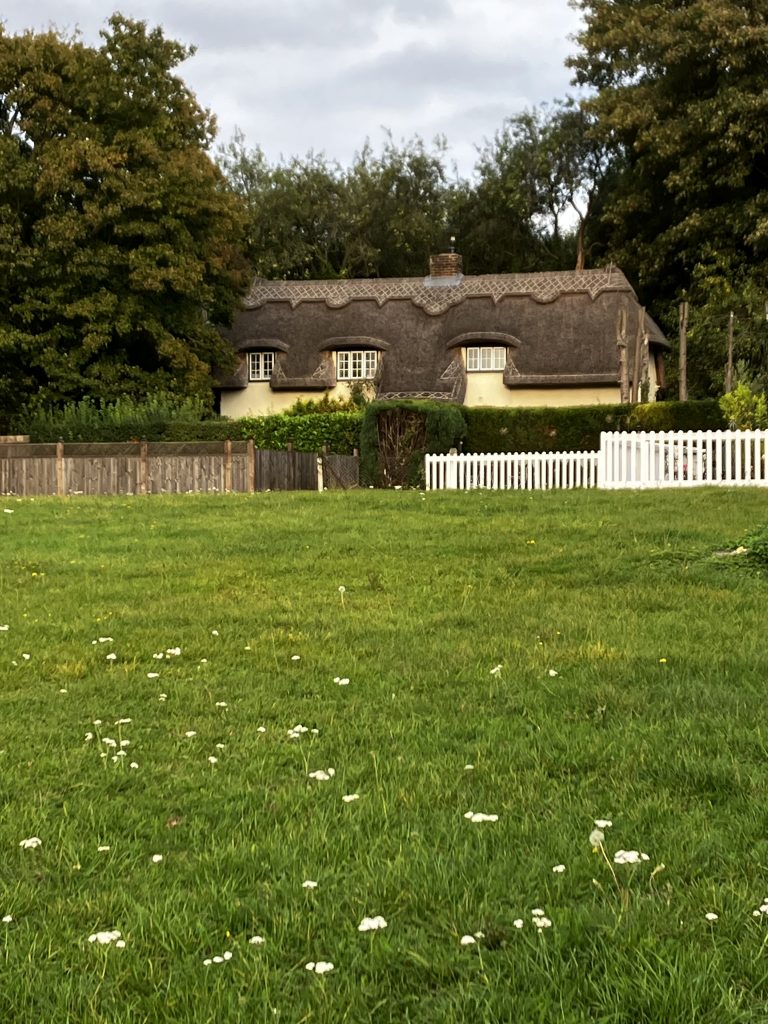
Thatch!
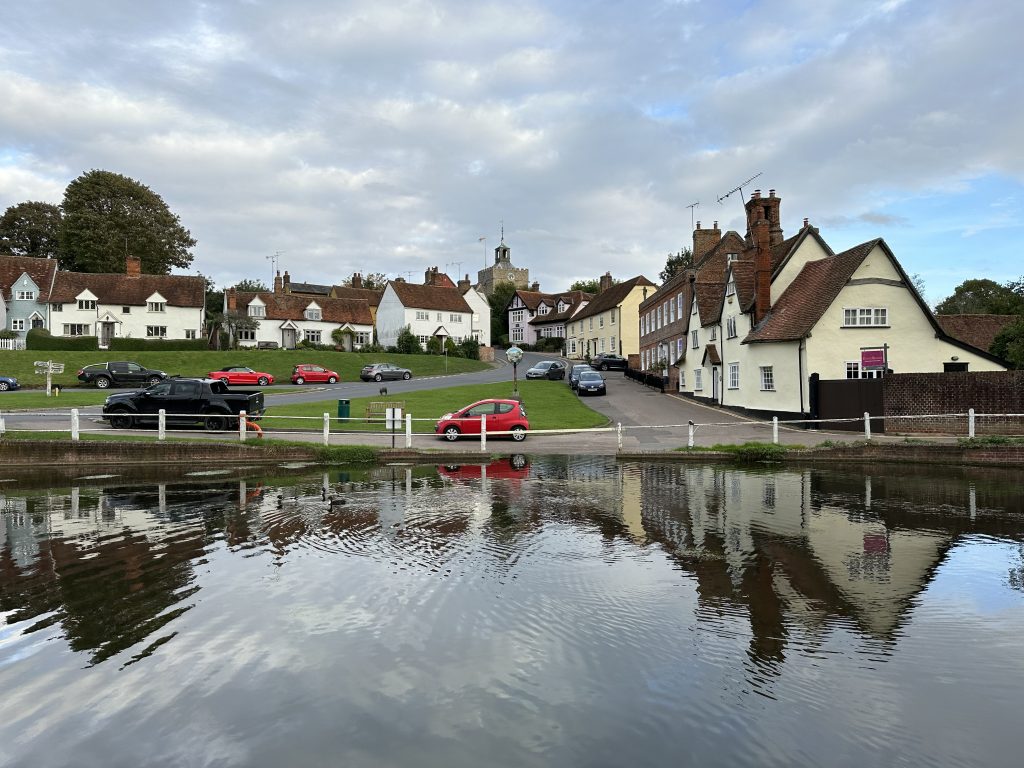
Scott took this one with the reflection in the water.
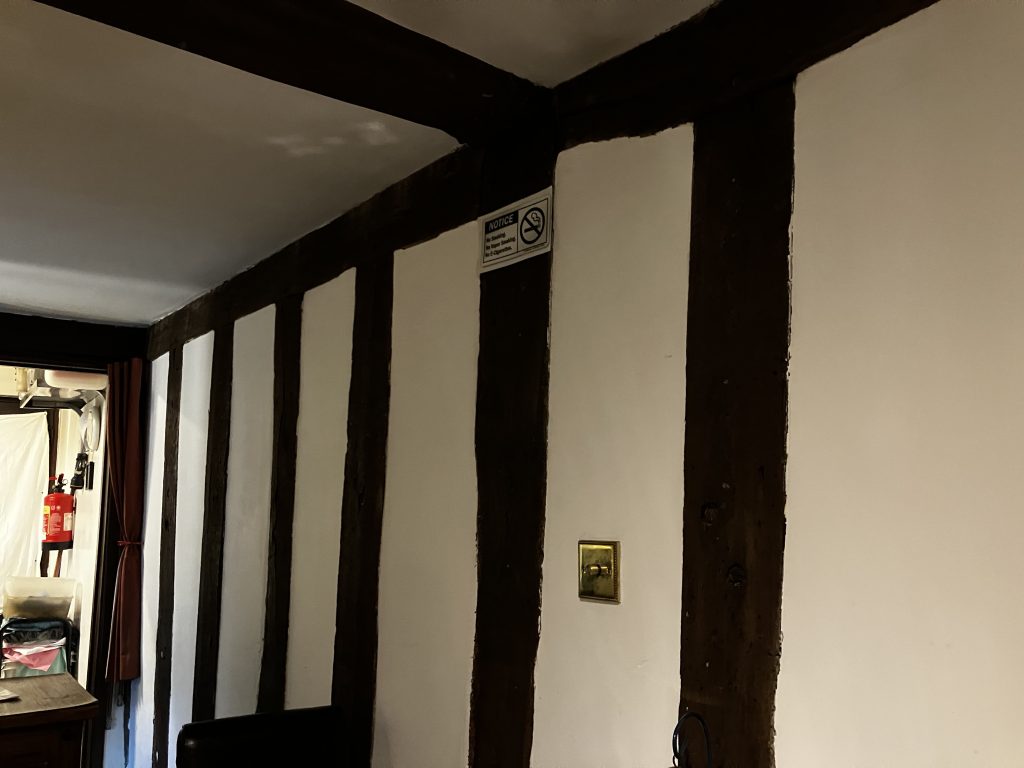
For dinner we went to a lovely Italian restaurant in Maldon, housed in a 1500’s building with oak battens and rafters from sailing ships.
The lights were quite blinding from the candles on the tables and the many electric lights in the ceiling. How fortunate then, that they sat Scott right next to the dimmer switch.
Over time, the lighting in the restaurant mysteriously changed to be more flattering to many of the patrons. I’m sure our waitress knew what was going on. She enjoyed it.
Such beauty in the chocolate box village and the features in both the abbey and the towns are amazing.
My husband would be spending ages at the bric-a-brac stall and antiques shops.
I’m travelling with Scott, so there’s been a fair amount of time doing that too.